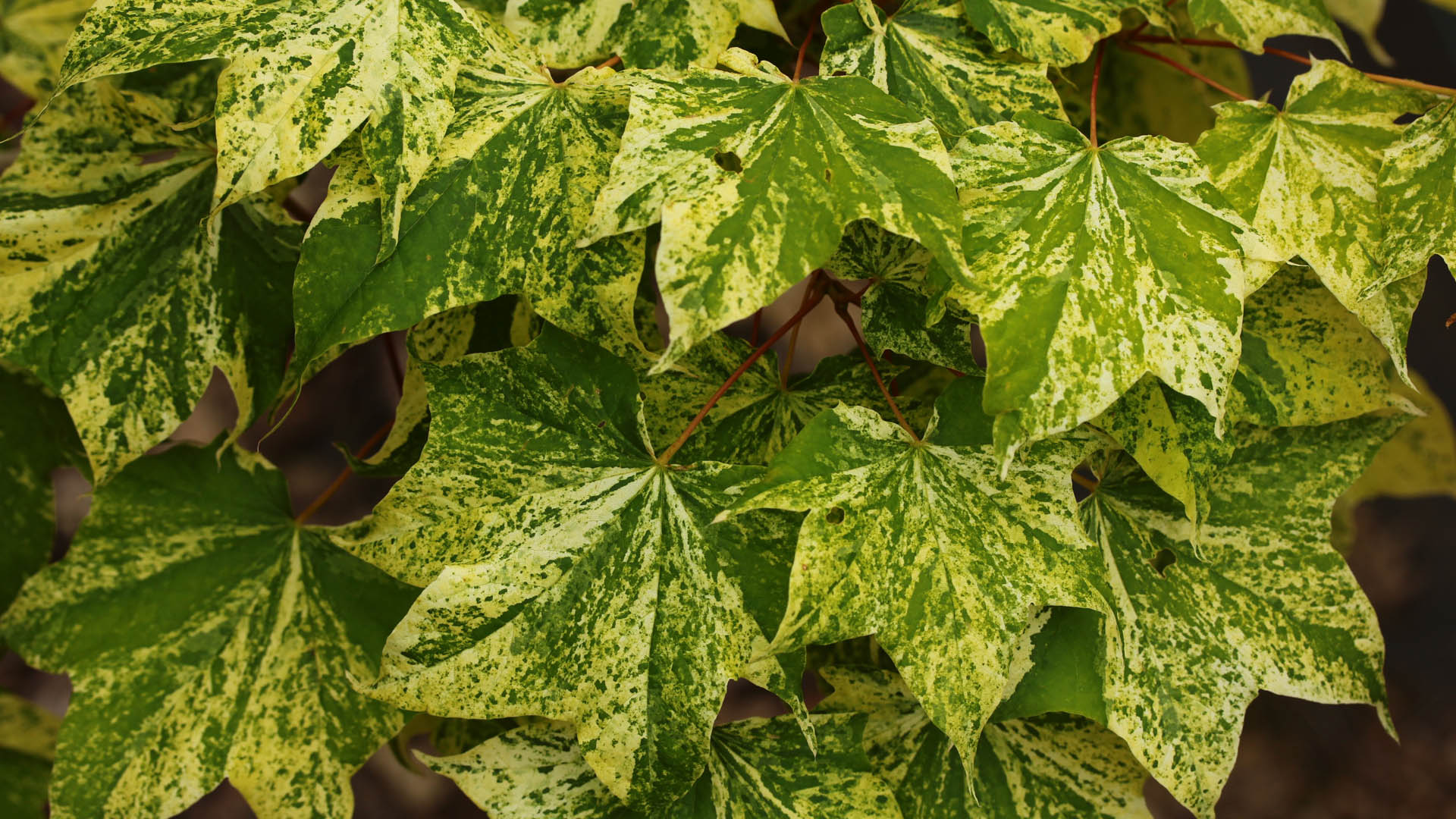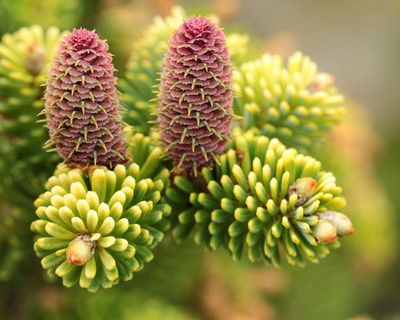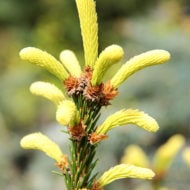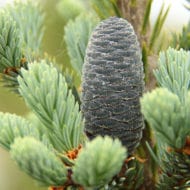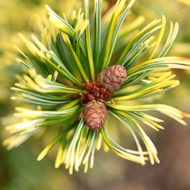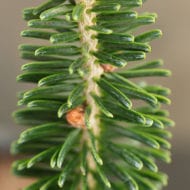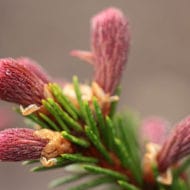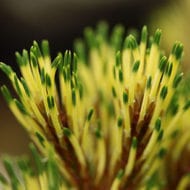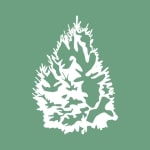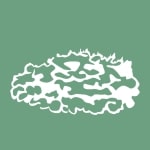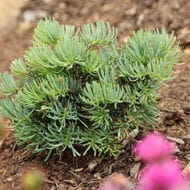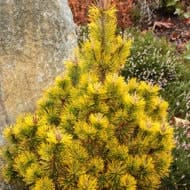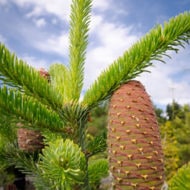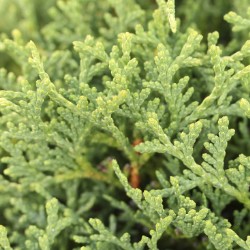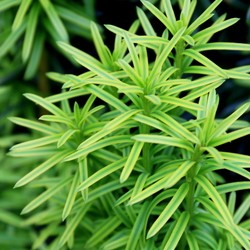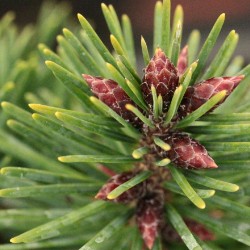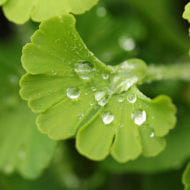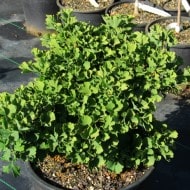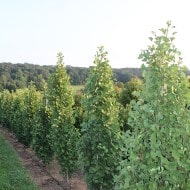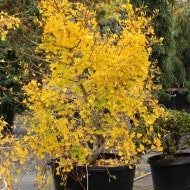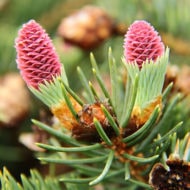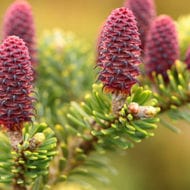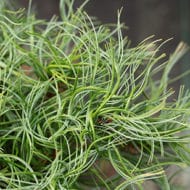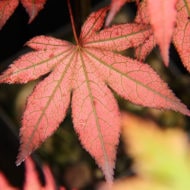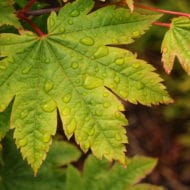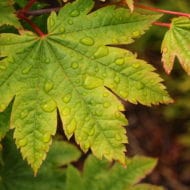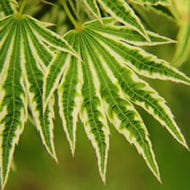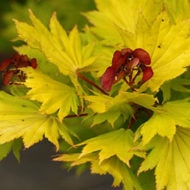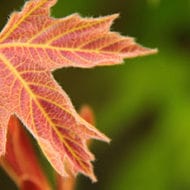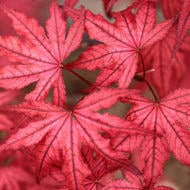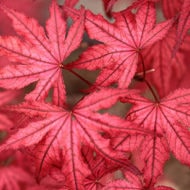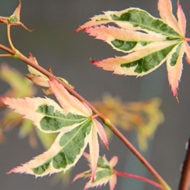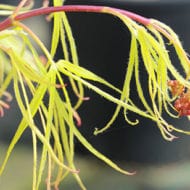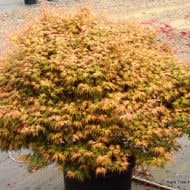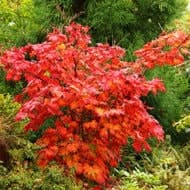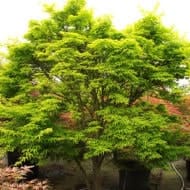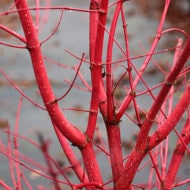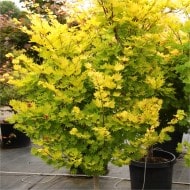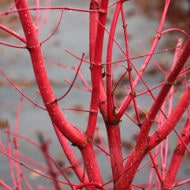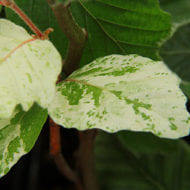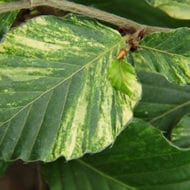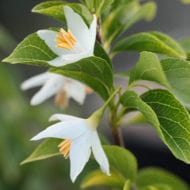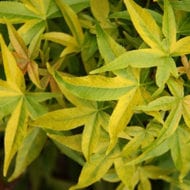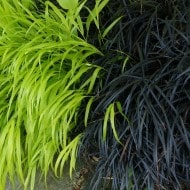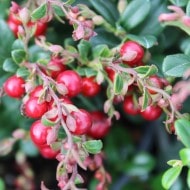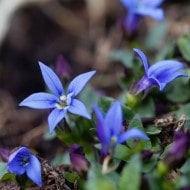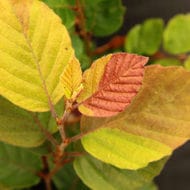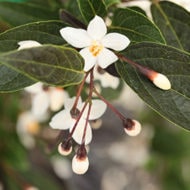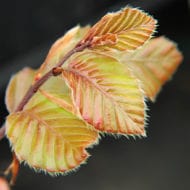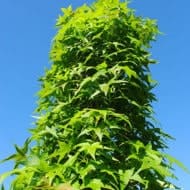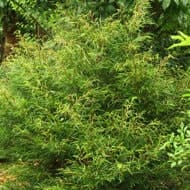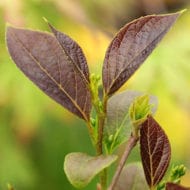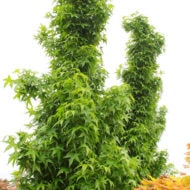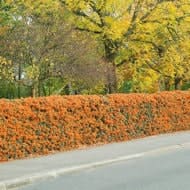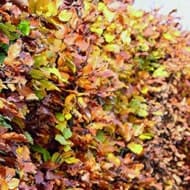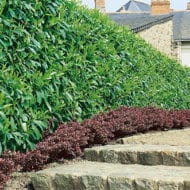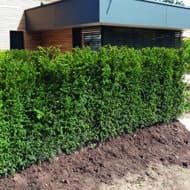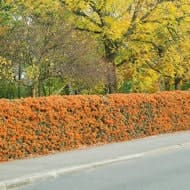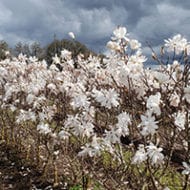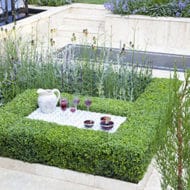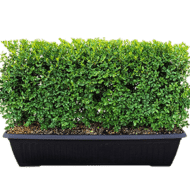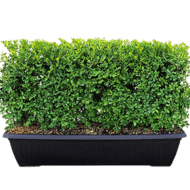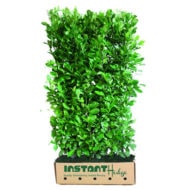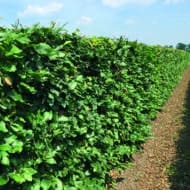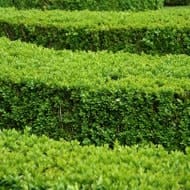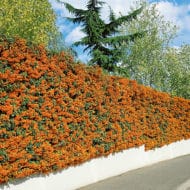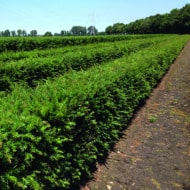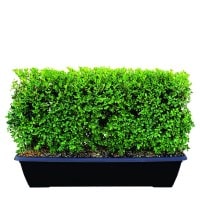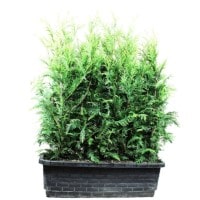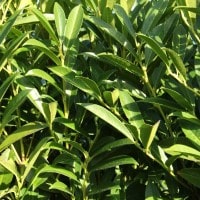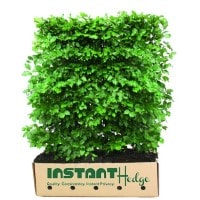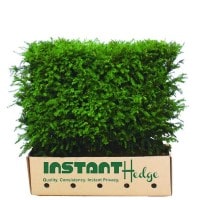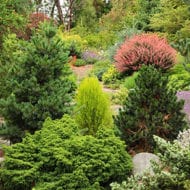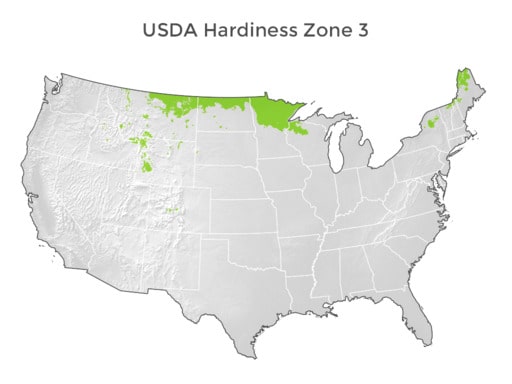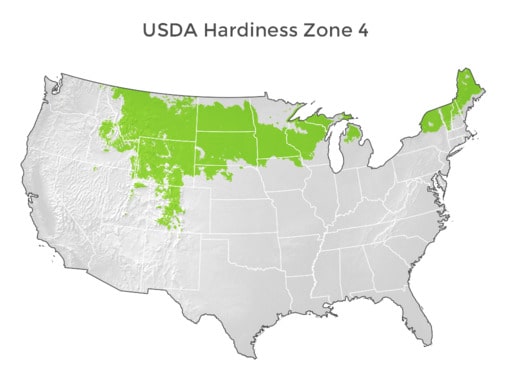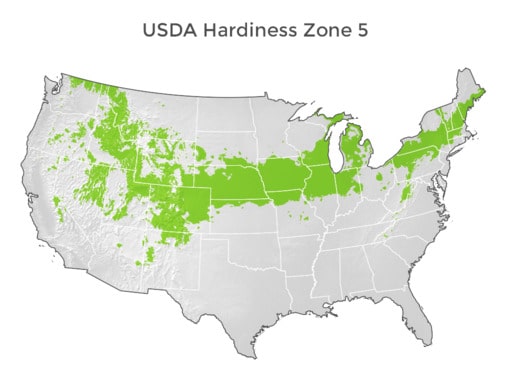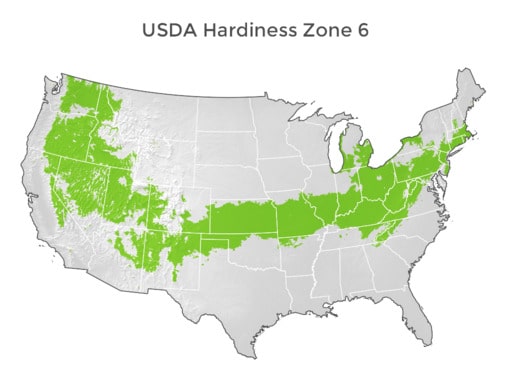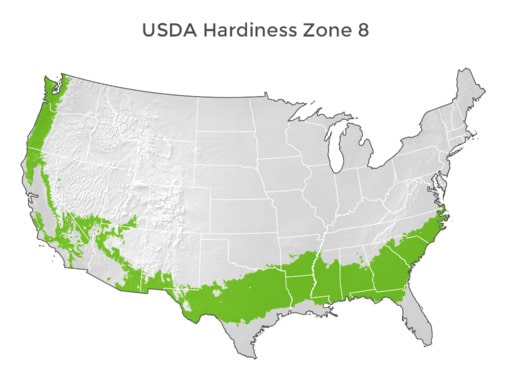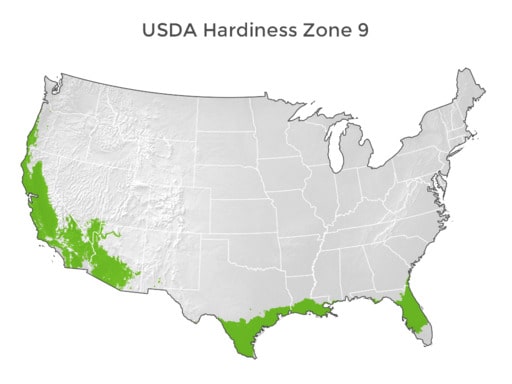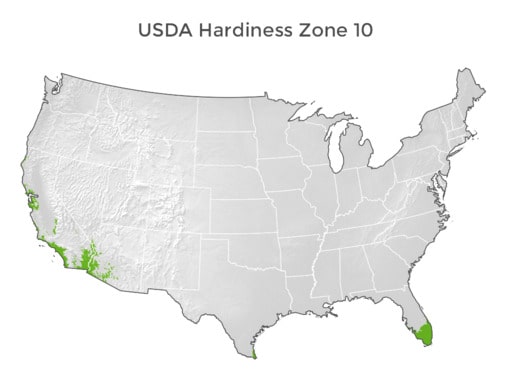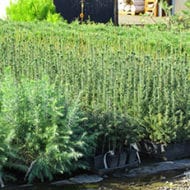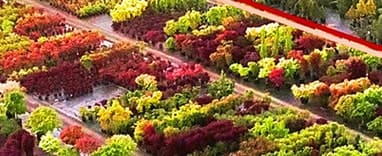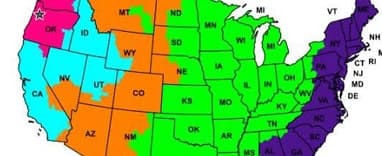Every garden needs at least one Japanese maple (ok, more like 100) to add grace, beauty, color, and romance. It’s a good thing that they exist in nearly every shape, size, and color imaginable! One exceptionally useful group of maples is that with a dwarf growth rate (growing 6” or less annually). These petite wonders can be used anywhere, from the smallest garden to a prominent container display. Read on to learn all about how to grow dwarf Japanese maples and how to find the best variety for your landscape.
Designing with Dwarf Maples
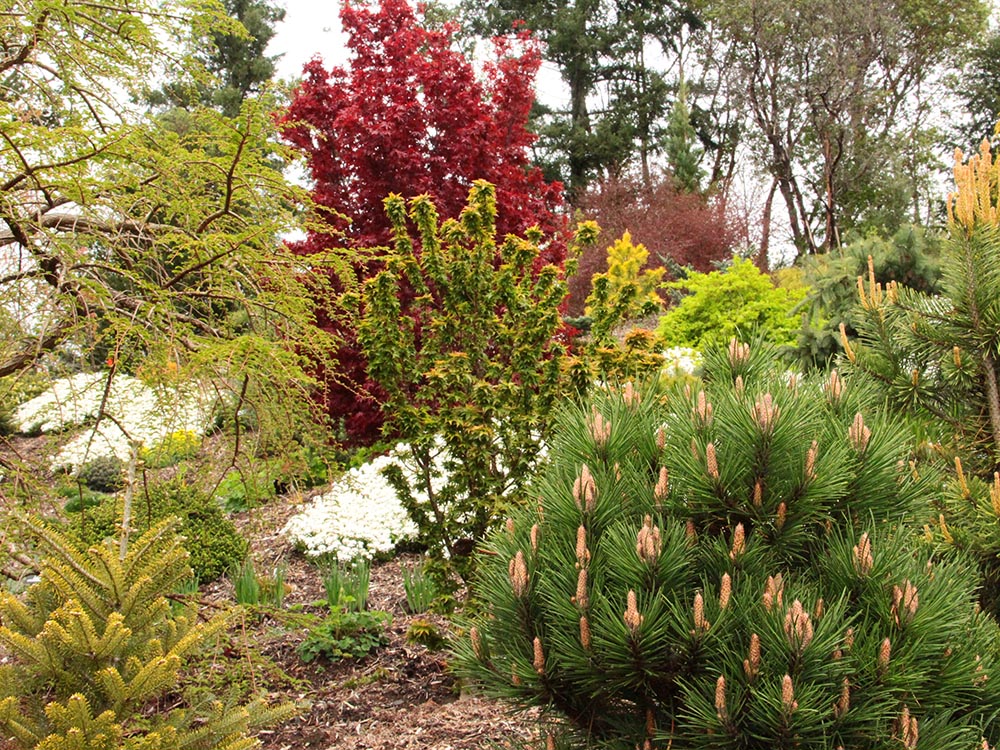
Small gardens are often the starting point for gardeners looking to plant small. You don’t need to sacrifice variety, color, and texture when dealing with a tight space! Simply look for varieties of all your favorite plants that grow slowly, and you can build your own perfect, compact landscape. Japanese maples in particular have a huge number of dwarf varieties, with more being added all the time.
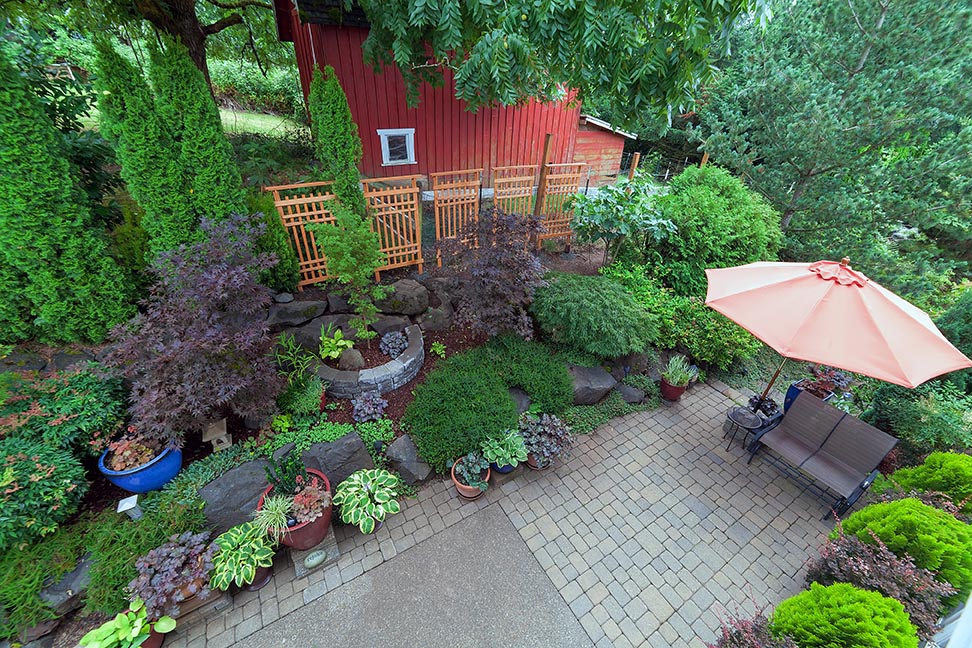
Small gardens and backyards can pack in loads of color and texture by planting dwarf maples in the ground and arranging them in containers.
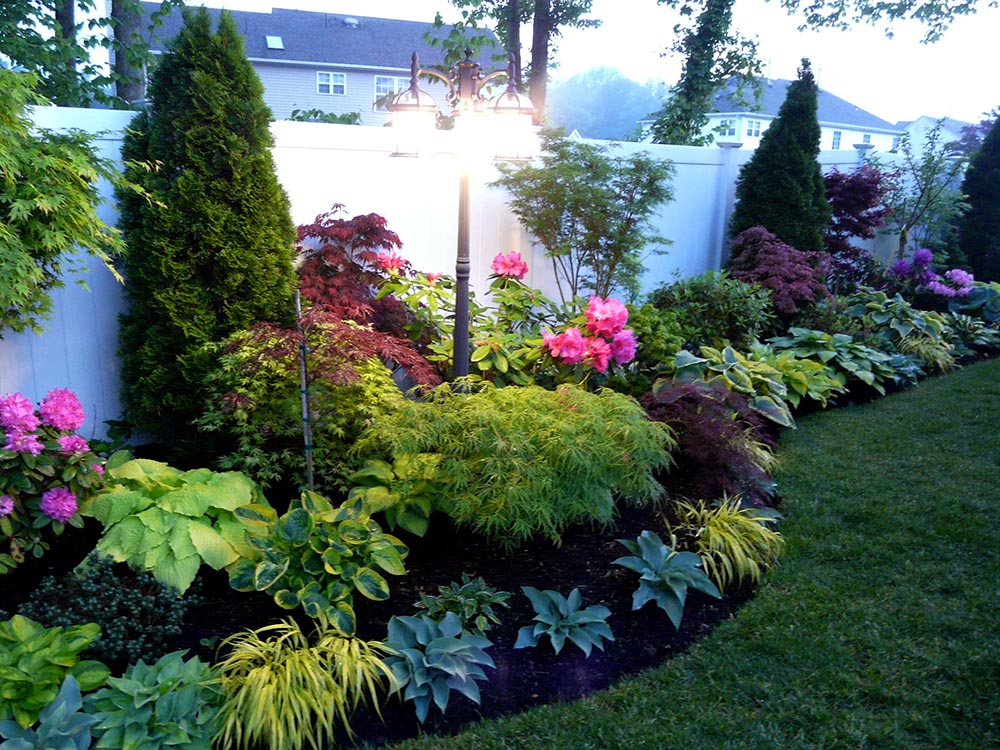
Dwarf maples are available in a range of shapes, sizes, colors, and textures, so plant a wide variety to add low-maintenance beauty to your landscape. Photo: S. Jafri
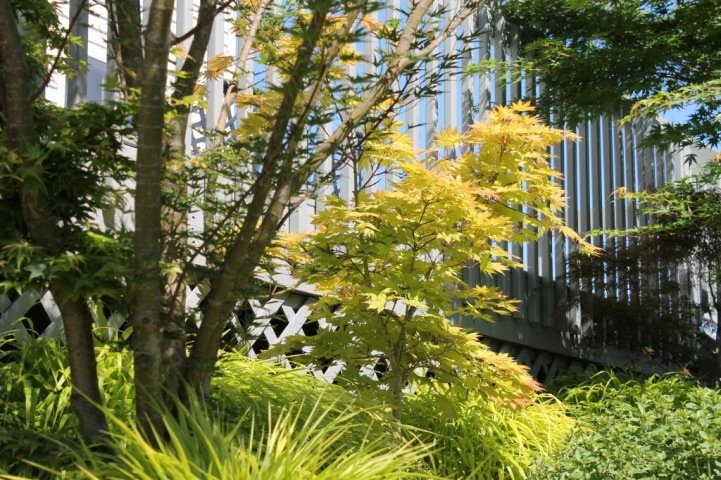
Many dwarf maples can tolerate partial shade, so they make perfect understory plants to add color and privacy without causing crowding. Photo: A. Ruchelman
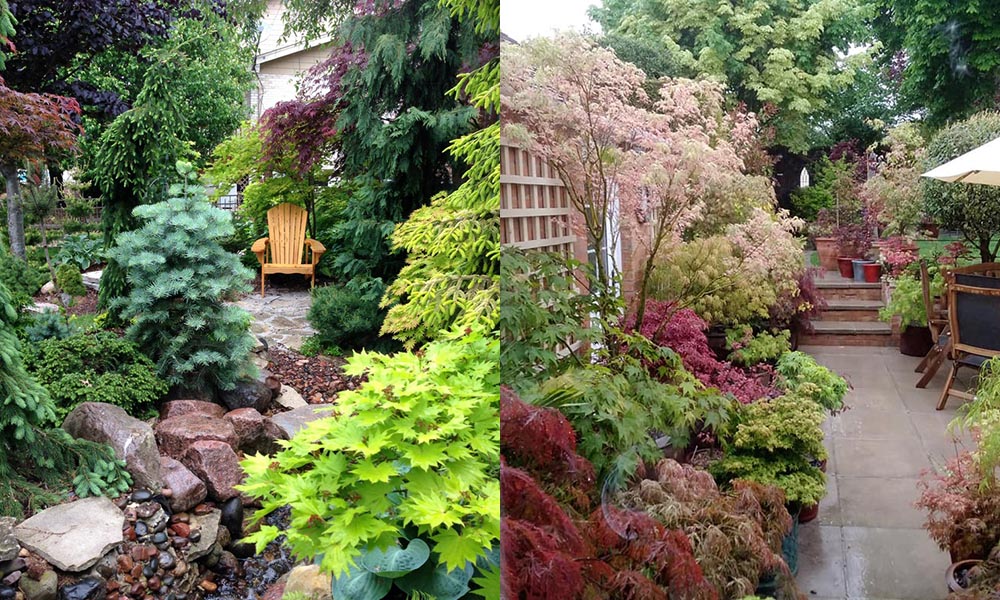
Whether you have space for planting or need to grow your maples in containers, you can create a peaceful sanctuary in your small garden using dwarf Japanese maples. Photos: D. Wols and R. Duckett
Containers are a perfect way to grow dwarf maples. Some dwarf maples grow so slowly that they may be able to stay in the same pot for many years without needing to be sized up or root pruned. You can set your beautiful potted maple on your patio or a balcony, or you can set it out in a garden bed to add height and interest.
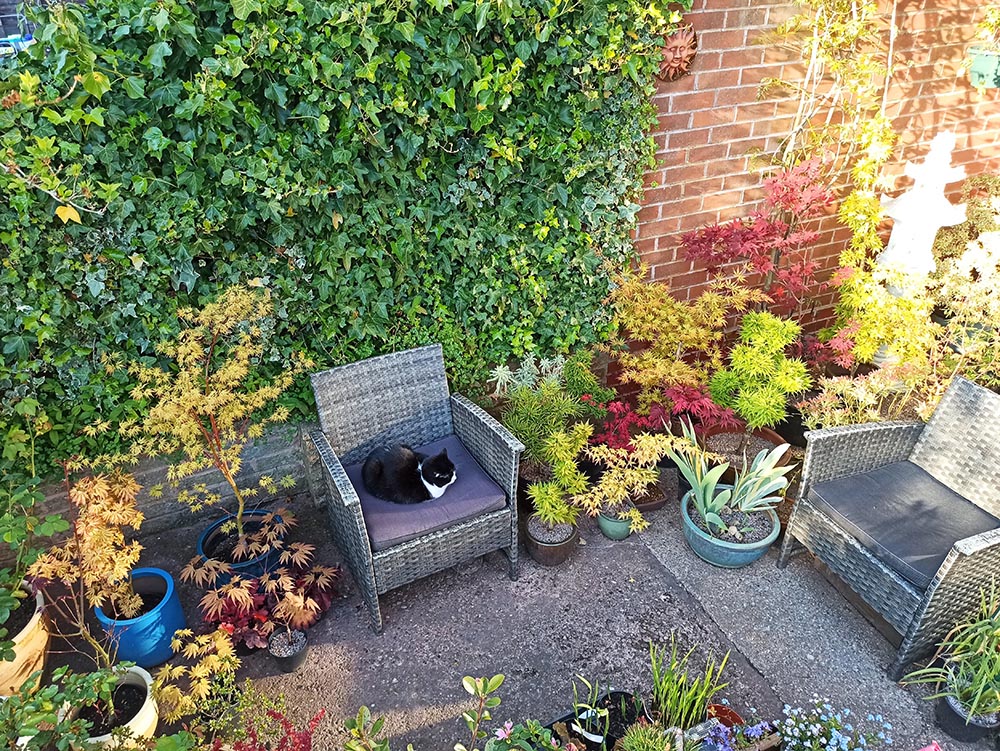
Even on a patio or in a courtyard with no soil for planting, you can bring the garden to you by planting dwarf maples and companion plants in containers. Photo: A. Radley

You can create different themes of gardens with dwarf maples in containers, like the Japanese garden pictured on the left. For contrasting heights, you can plant intermediate or large Japanese maples in containers and simply prune them to maintain your desired size, like the garden on the right. Photos: A. Radley and R. Duckett
Bonsai experts and beginners alike can create incredible miniature specimens using dwarf varieties of maples. The slower growing types are especially good for those just starting their bonsai journey, as they require less pruning and expertise. Some are practically natural bonsai trees!
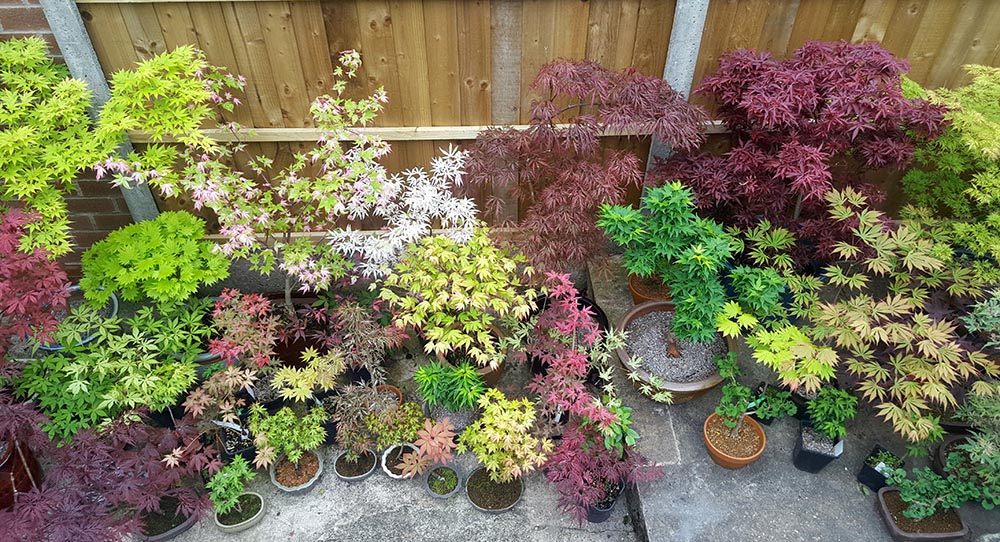
Dwarf Japanese maples can be grown in pots like bonsai specimens with very little pruning required. Photo: A. Radley
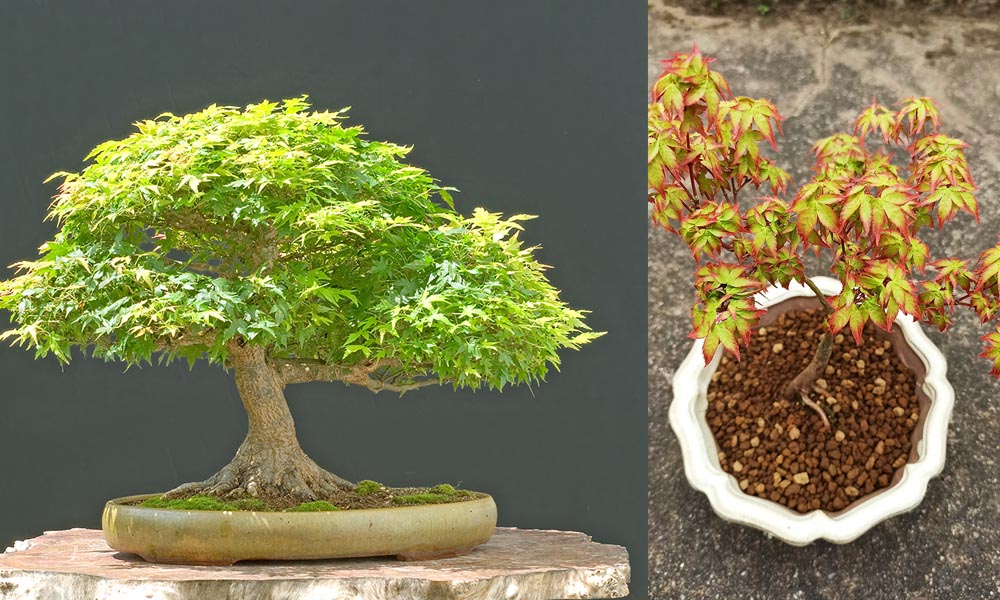
Dwarf maple varieties with unusual color or tiny leaves make incredible bonsai specimens. Photo: A. Radley
Dwarf Maple Care

Dwarf Japanese maples are very low-maintenance and will thrive with very basic care.
When planting, dig your hole just as deep and a bit wider than the maple’s root ball. Loosen any circling or tight roots, then place the tree in the hole, making sure that the root flare (the place where the highest roots come out of the trunk) is just beneath the surface of the soil. Do not bury it any deeper than that root flare. Water well after planting and apply mulch around the base, if available, to help protect roots from heat and cold and to keep the soil from drying out too much.
Apply a slow-release fertilizer in spring to feed the new growth through the year.
Water consistently in dry periods, about once or twice per week. Japanese maples don’t need a lot of water but do best in moist, well-draining soil.
You won’t need to do much pruning for shape or size to your dwarf maple as the growth is naturally very slow. Simply prune off any dead or diseased branches when the plant is dormant. Make sure to sanitize your pruning shears before and after pruning each maple tree.
The Best Dwarf Maple Varieties
And now, the part you’ve been waiting for! There are so many wonderful varieties of dwarf maples that we will break them down by color for you to use as a handy guide.
Green Dwarf Maples
Acer palmatum ‘Shishigashira’, also known as “Lions Head Maple”, is a classic Japanese maple with curled leaves and a sculptural form. It is a great choice for small spaces or growing in containers due to its slow growth and upright shape, reaching about 7’ tall by 4’ wide at 10 years old. In spring and summer, Shishigashira has a lovely deep green color, with a brilliant red-orange display in fall that is enhanced by full sun exposure. It is hardy to USDA Zone 6.

Acer palmatum ‘Fairy Hair’ is an exceptionally unique dwarf Japanese maple, with thin, hair-like leaves that are green in summer with a peach blush when grown in full sun. In fall, the leaves turn fiery red. The name says it all! It adds a romantic, dramatic look to the garden. It has an extremely slow growth rate, reaching only about 3’ tall at 10 years old. It is surprisingly tough and easy to grow, being hardy to USDA Zone 5. Fairy Hair grows well in full sun to partial shade.
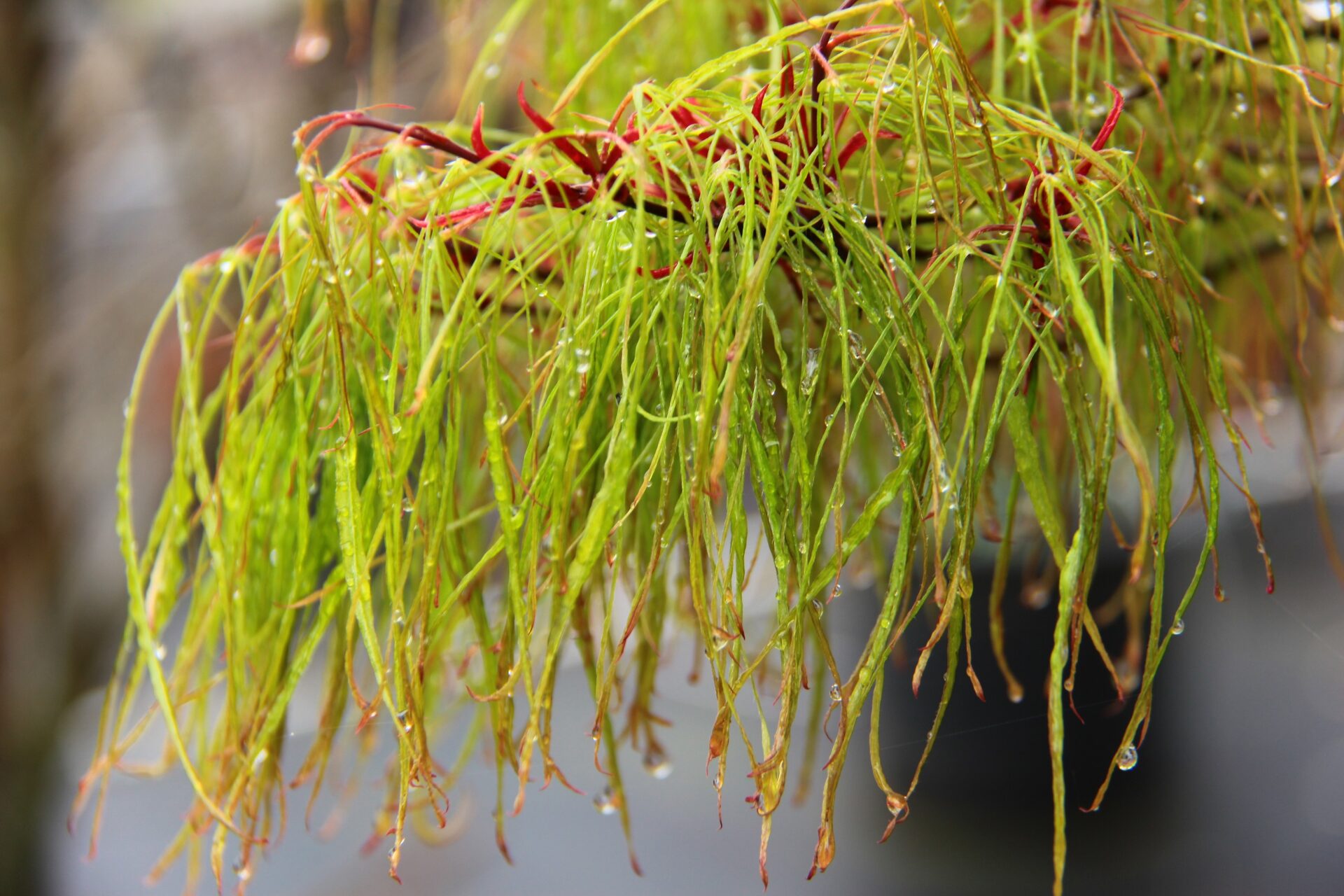
Acer palmatum ‘Goshiki kotohime’ is a dwarf maple with an interesting sculptural vase shape and leaves that are held tightly to the branches for a bonsai-like effect. The leaves emerge in spring in tones of pink and orange, with some variegated patches. The summer color is bright green, then fall brings fiery gold, orange, and red tones. By 10 years old, Goshiki kotohime can reach 5-6’ tall by 3’ wide. It is hardy to USDA Zone 6.
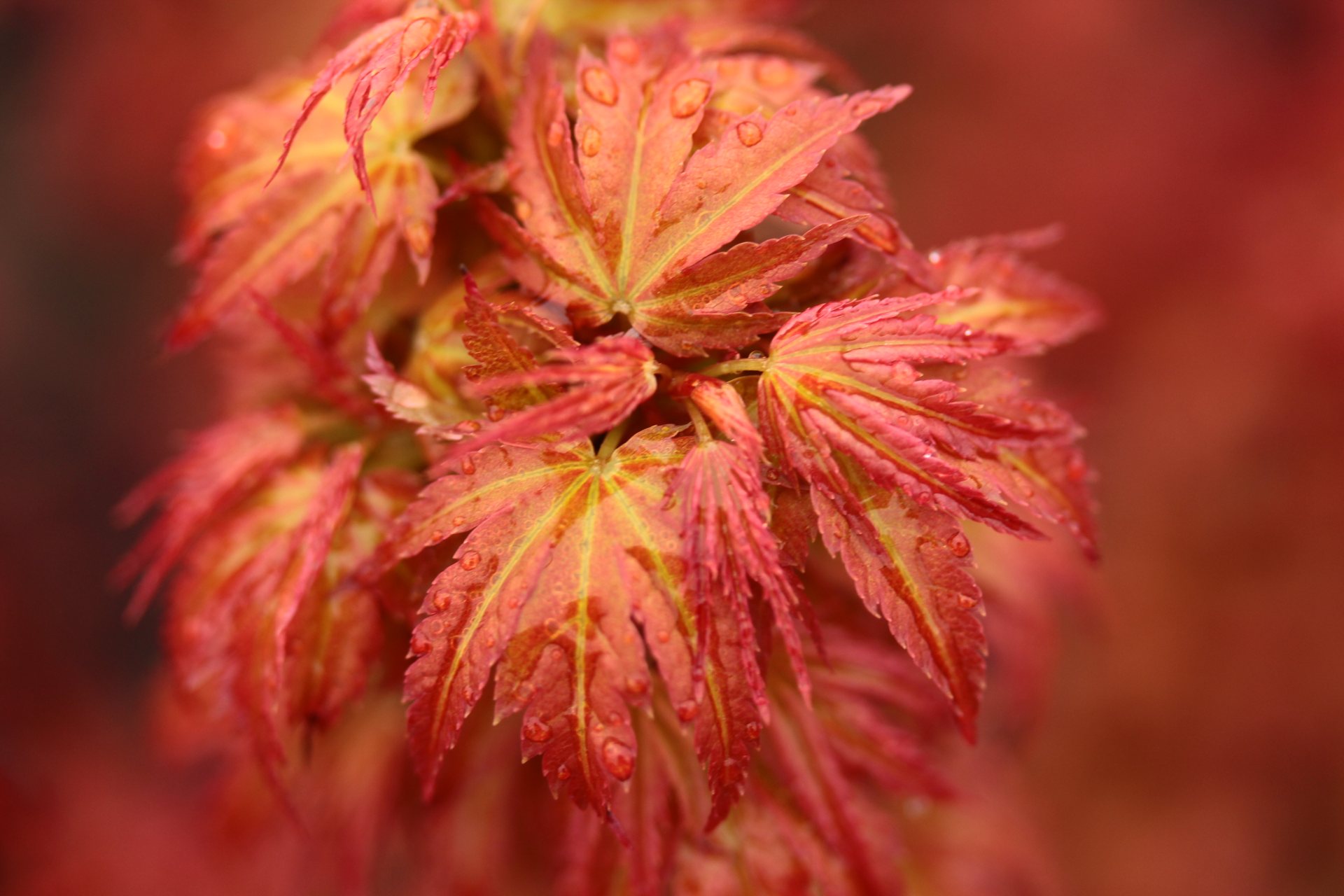
Acer palmatum ‘Koto no ito’ is a wonderful dwarf maple with fine-textured strap leaves. The name translates to “harp strings”, and it provides a delicate softness to the landscape. In spring, the leaves emerge with crimson tones that quickly turn to a fresh green for summer and light up in shades of orange and gold in fall. It can reach about 7’ tall by 3’ wide at 10 years old. Koto no ito is hardy to USDA Zone 5 and grows well in full sun to nearly full shade.
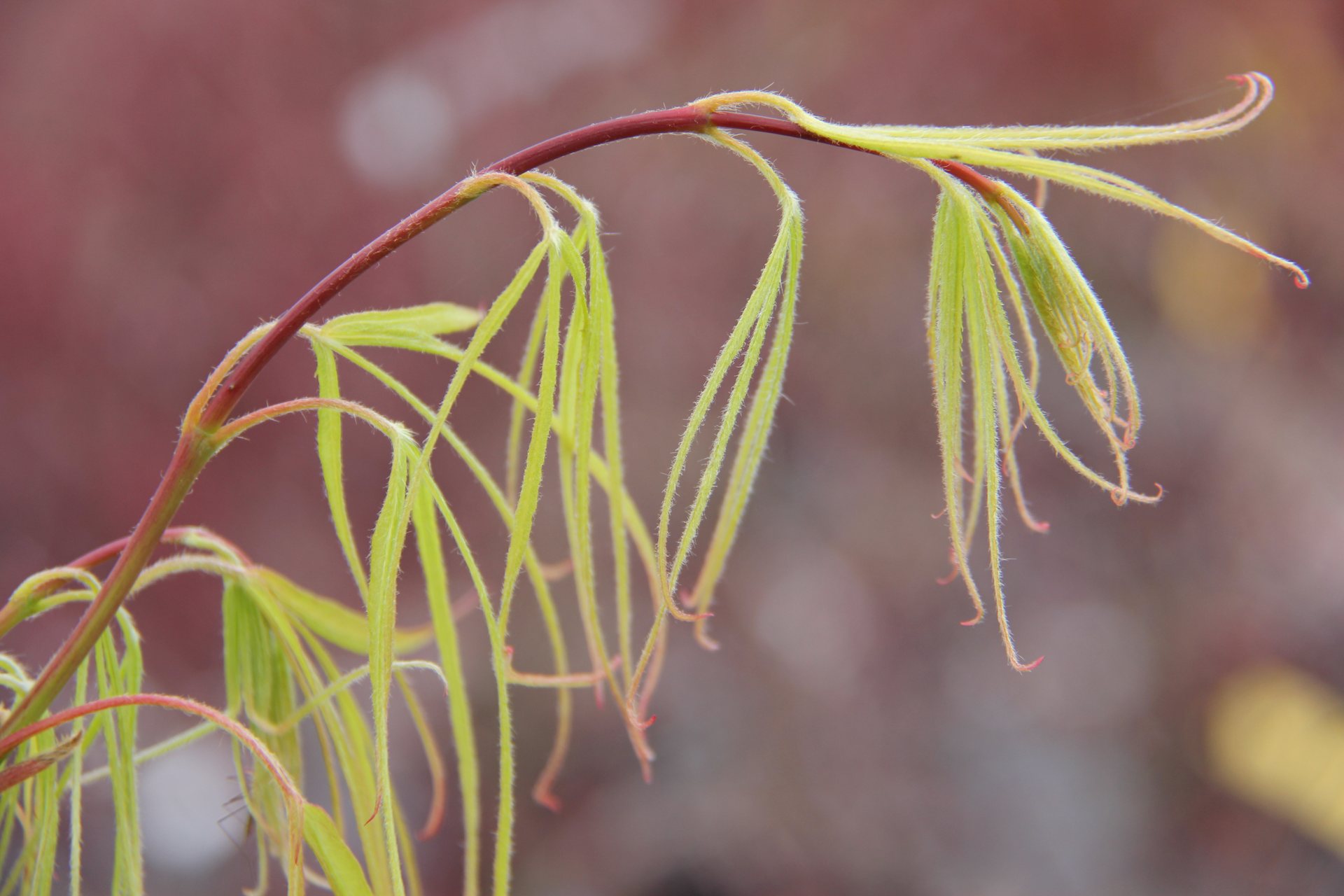
Acer palmatum ‘Mikawa yatsubusa’ is an extremely popular dwarf Japanese maple with a stunning, naturally sculptural form. Its leaves are held in layers, giving it an incredibly dense appearance with an assortment of leaf sizes and colors. The new growth displays colors of yellow and green with older growth becoming a lovely deep green. In fall, the display is gold to scarlet. Mikawa yatsubusa creates a stunning focal point in the landscape. At 10 years old, you can expect 5’ tall by 4’ wide. It is hardy to USDA Zone 5 and grows well in full sun to partial shade.
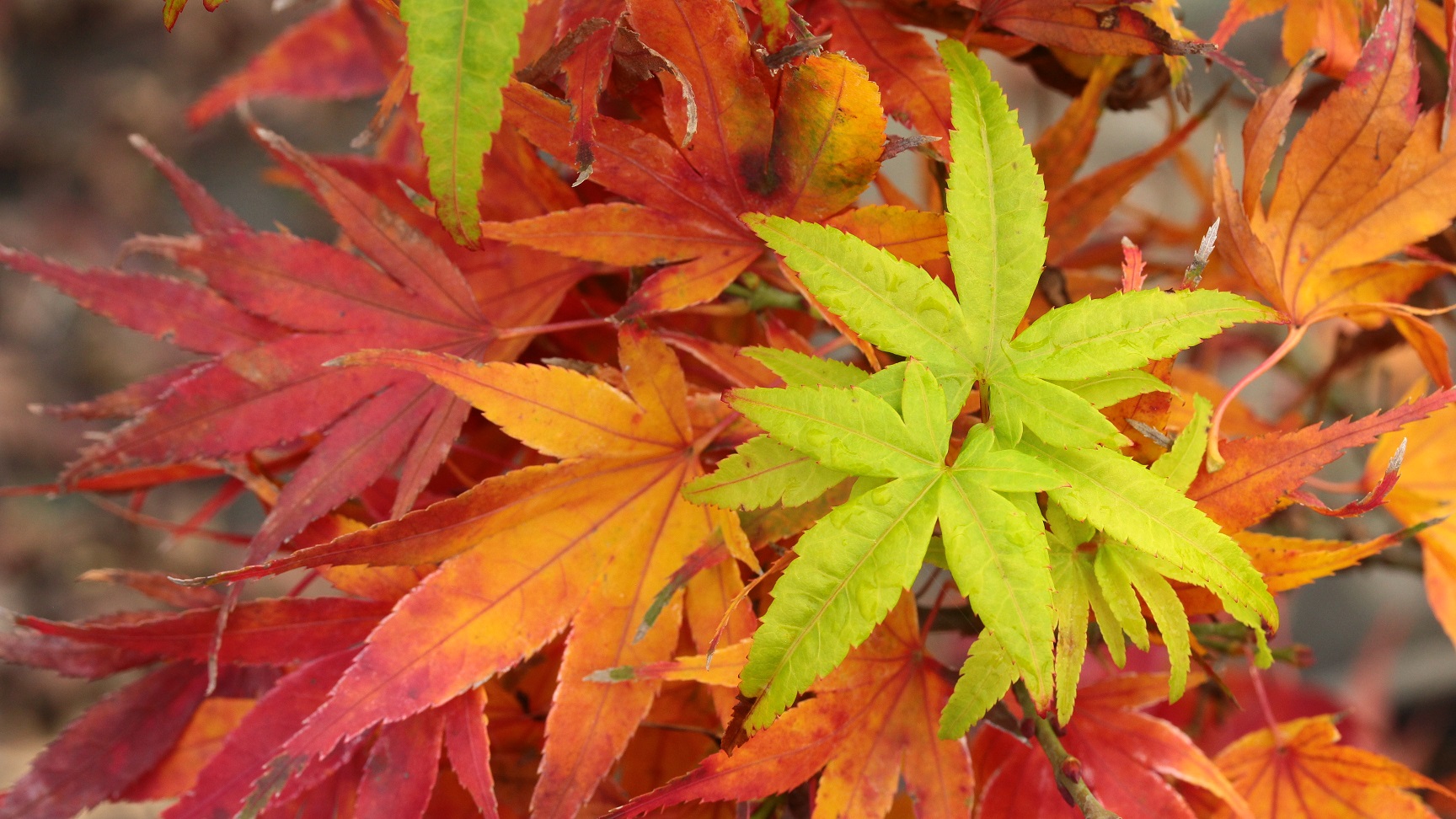
Acer palmatum ‘Tattoo’ is a truly tiny Japanese maple. Tattoo has similar features to Mikawa yatsubusa regarding leaf shape and color, but it is much more compact than the already dwarf Mikawa. It has conspicuous pink flowers in spring that attract honeybees and develop into red samaras later in the season. This Japanese maple is good for bonsai and for growing in containers and small gardens. At 10 years old it can reach 2-4’ tall. It is hardy to USDA Zone 5.
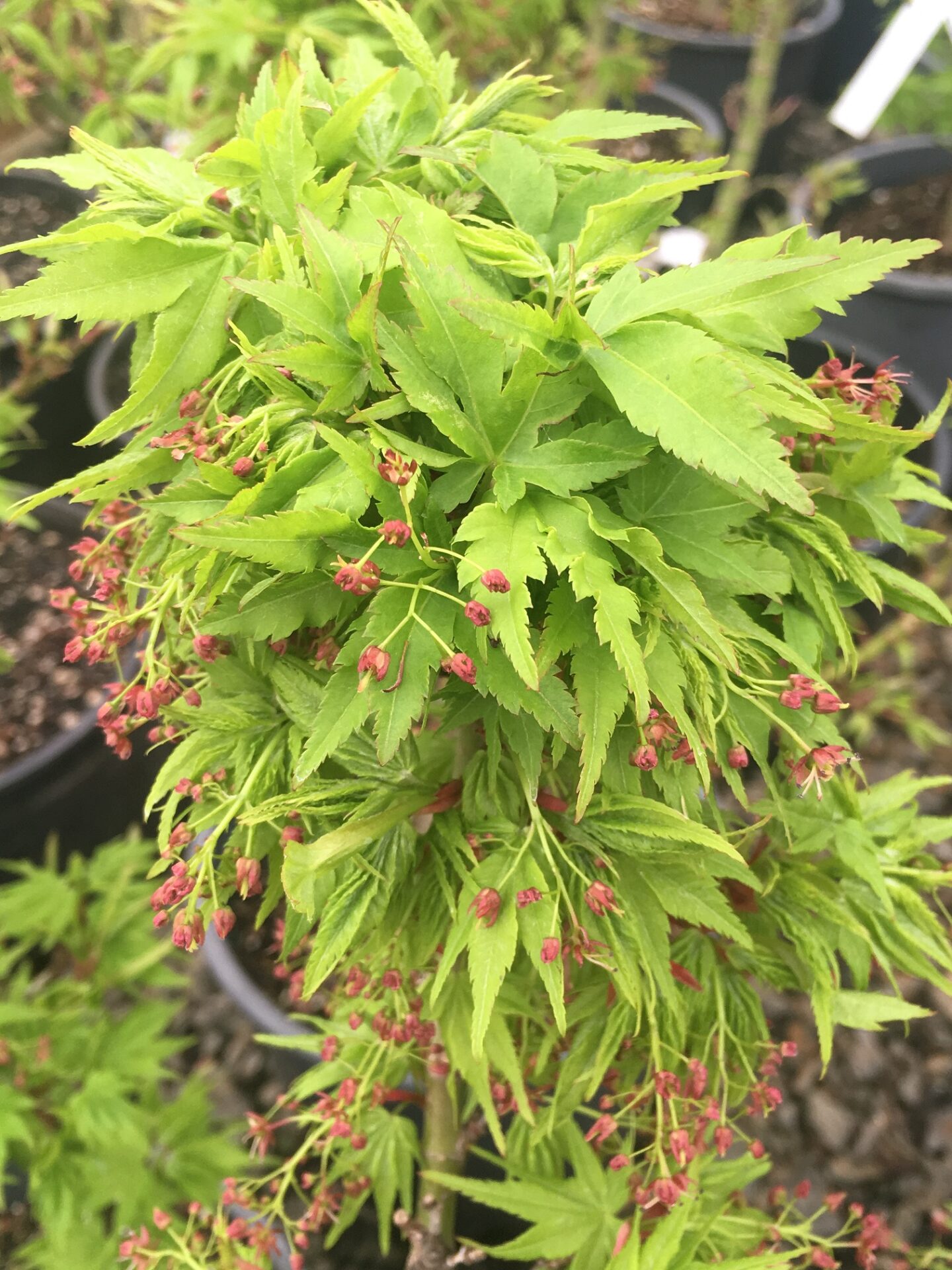
Acer circinatum ‘Baby Buttons’ is the cutest vine maple you ever did see! With leaves the size of your fingertip and a petite stature (only 2’ tall by 2’ wide at 10 years old), you can get the beauty of the Pacific Vine Maple on a small scale in your garden or in a container. The orange-red fall color is stunning. It grows well in full sun or partial shade and is hardy to USDA Zone 5.
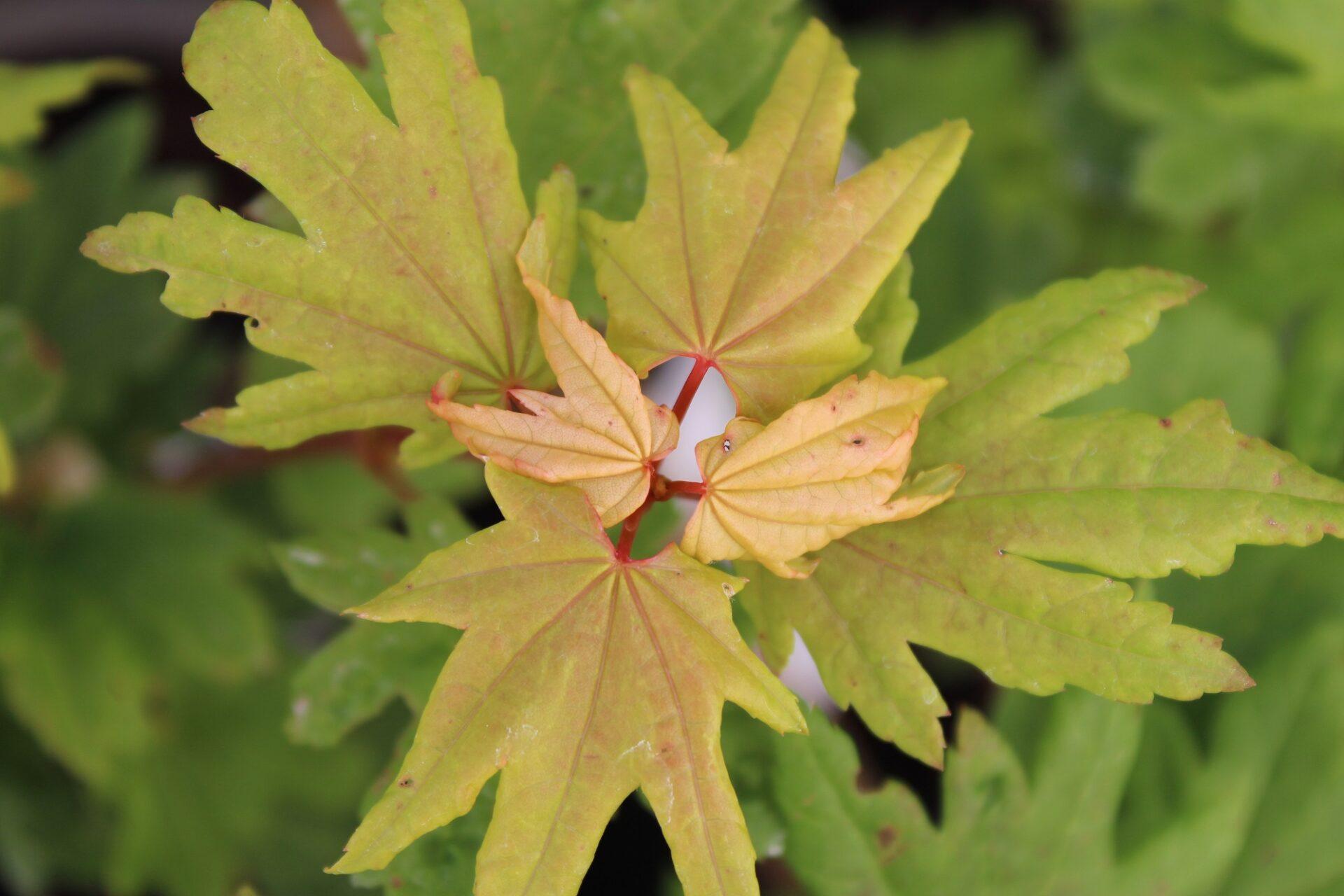
Acer japonicum ‘Fairy Lights’ is a dwarf maple with lacy leaves and stunning fall color. The leaves are very deeply lobed, giving it a delicate appearance. In spring and summer, it is a fresh green color, but in fall it displays brilliant hues of yellow, orange, and red. The growth rate is slow, reaching only about 4’ tall or less at 10 years old. Fairy Lights does well in full sun to partial shade and is hardy to USDA Zone 5.
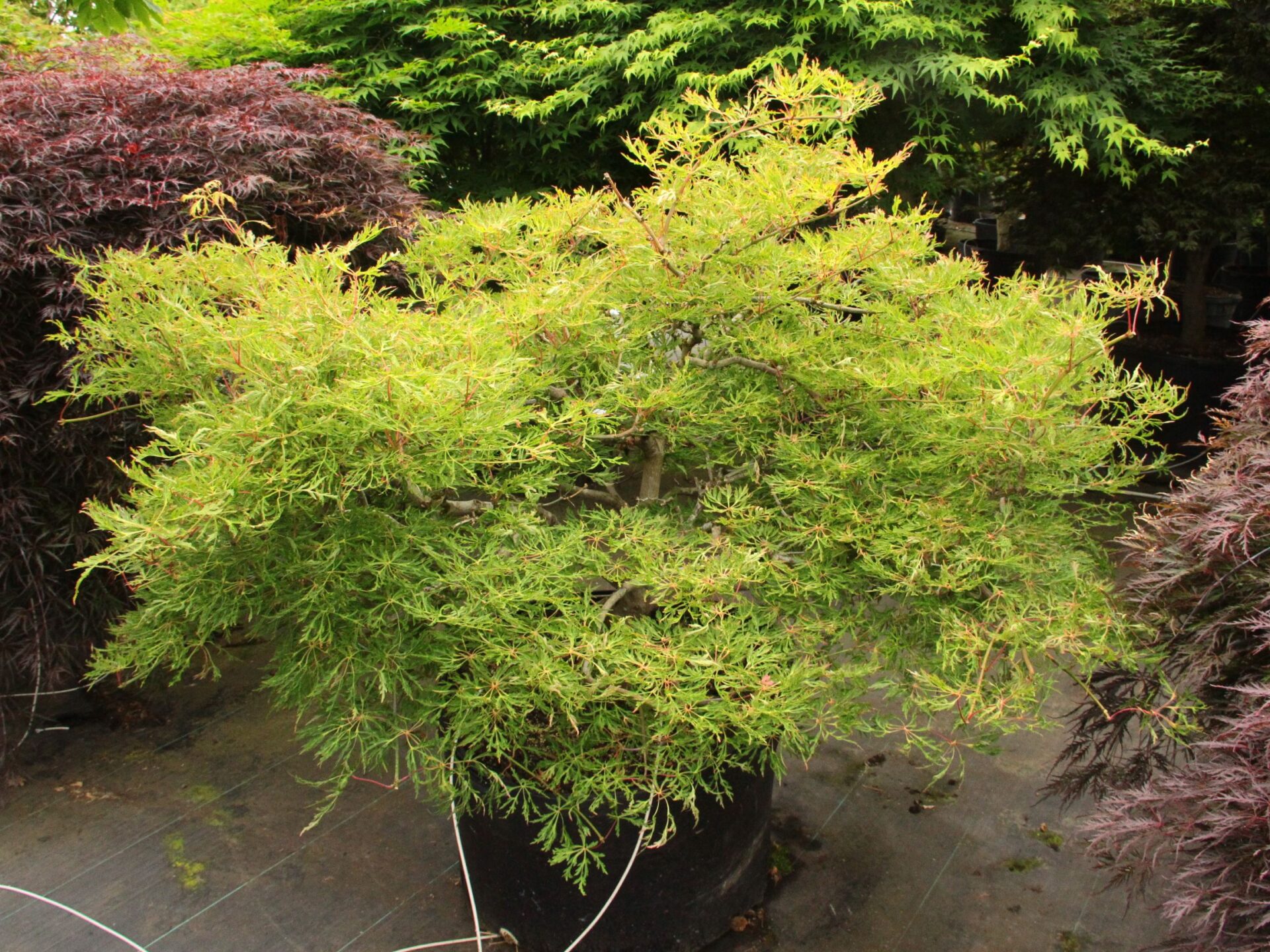
Acer japonicum ‘Gossamer’ has an unusually delicate leaf shape for an Acer japonicum, leading some to believe that it is likely a hybrid with Acer palmatum. Regardless of its parentage, Gossamer has beautifully lacy leaves with green summer color and a fantastic fall display in a wide range of colors. It grows slowly into a narrow vase shape, reaching about 8’ tall by 3’ wide at 10 years old. It is hardy to USDA Zone 5 and does well in full sun to partial shade.

RED, PURPLE, AND BURGUNDY DWARF MAPLES
Acer palmatum ‘Baby Lace’ has fine-textured leaves that emerge red-orange in spring, changing to a bronze-green with purple margins in summer. Fall colors range from orange to red. This maple is slow-growing and spreading, reaching about 1’ tall by 4’ wide at 10 years old. It is hardy to USDA Zone 6 but is sensitive to wind, so be sure to plant it in a protected area.
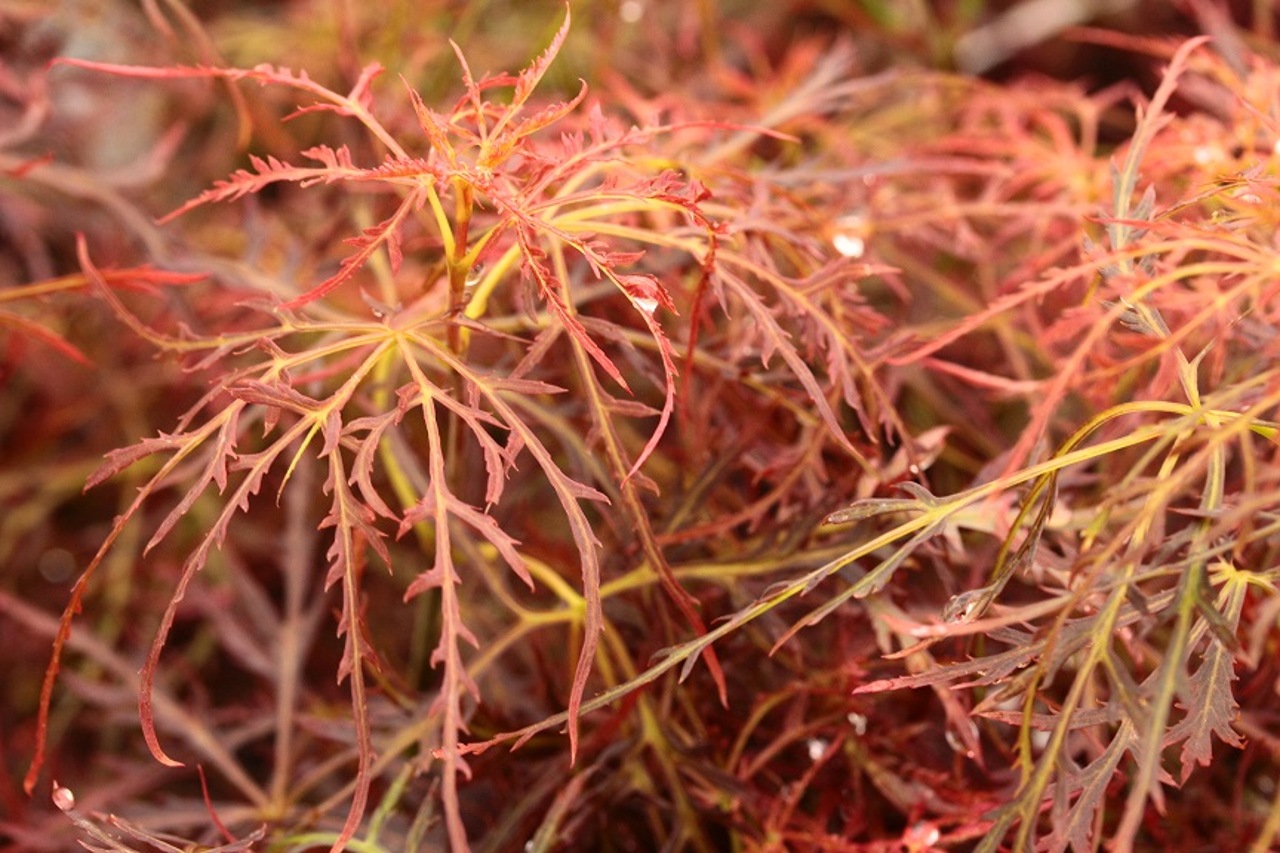
Acer palmatum ‘Kurenai jishi’ is one of the most desirable dwarf Japanese maples on the market. It grows in a compact shape similar to the famous Shishigashira, but it is a gorgeous deep red color! In spring, the leaves are a vibrant scarlet, deepening to a burgundy-purple in summer, with an orange display in fall. At 10 years old it only reaches about 4’ tall by 3’ wide, making it a perfect choice for small spaces and containers. Its name translates to “red lion.” Kurenai jishi is hardy to USDA Zone 5 and it grows in full sun to partial shade.

Acer palmatum ‘Orion’ has truly stunning spring colors, with new growth emerging bright crimson red. Through summer, the colors deepen to shades of orange, red, and copper-green. In fall, this petite lace leaf maple lights up orange. It grows only 3-6” per year, reaching about 5’ tall by 4’ wide at 10 years of age. It grows well in full sun to partial shade and is hardy to USDA Zone 6.
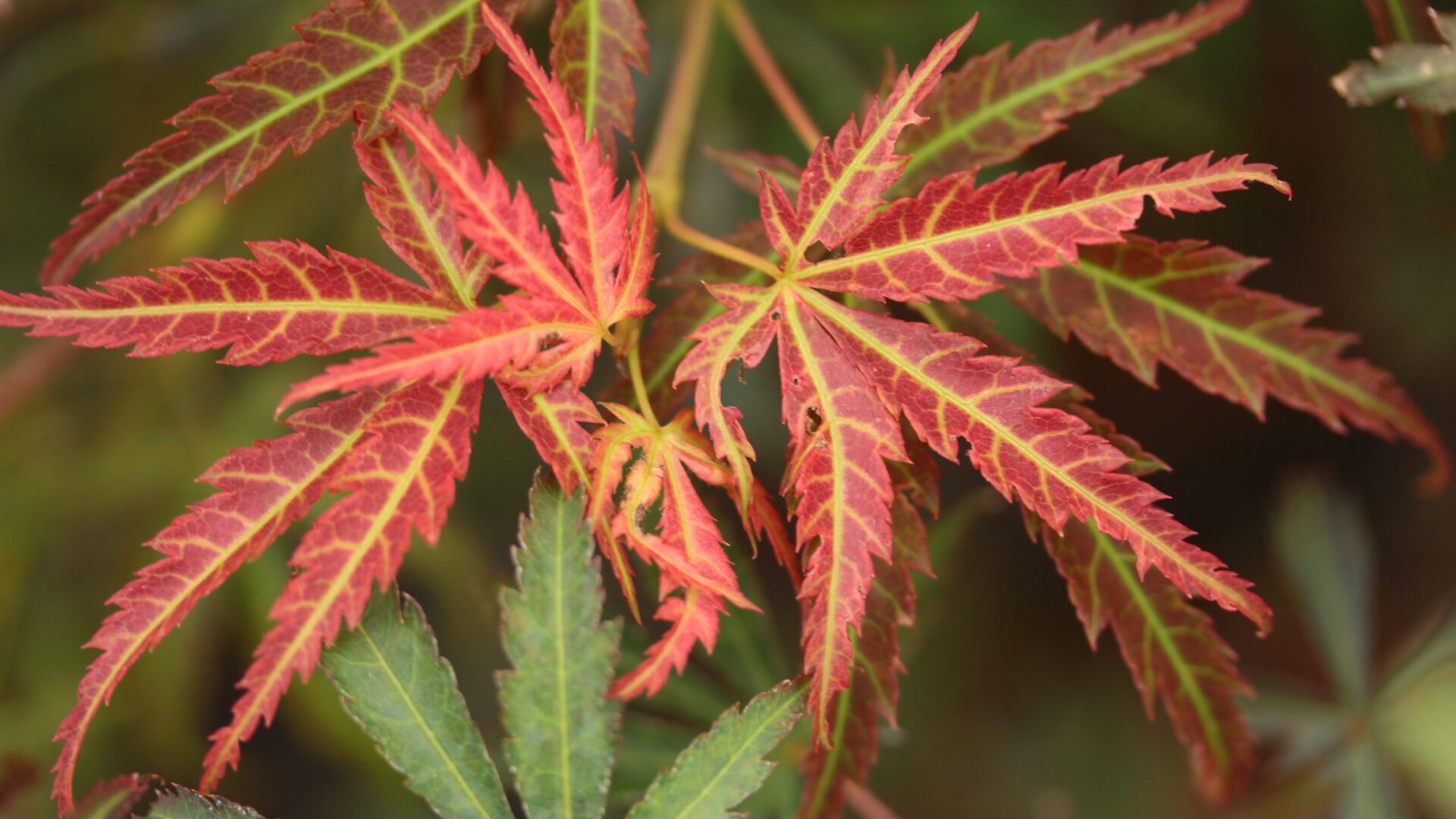
Acer palmatum ‘Pung kil’ is a strap leaf maple with bright red foliage for a unique texture. It holds its red color well throughout the summer, turning to a bright crimson in fall. Pung kil, named for a gentleman in South Korea where this variety was discovered, has a nice growth habit, taller than it is wide, making it a great fit for small spaces. At 10 years old you could expect a bushy tree reaching 6’ tall by 3’ wide. It is hardy to USDA Zone 5 and grows well in full sun to partial shade. The foliage may be a bit more green when planted in more shade.
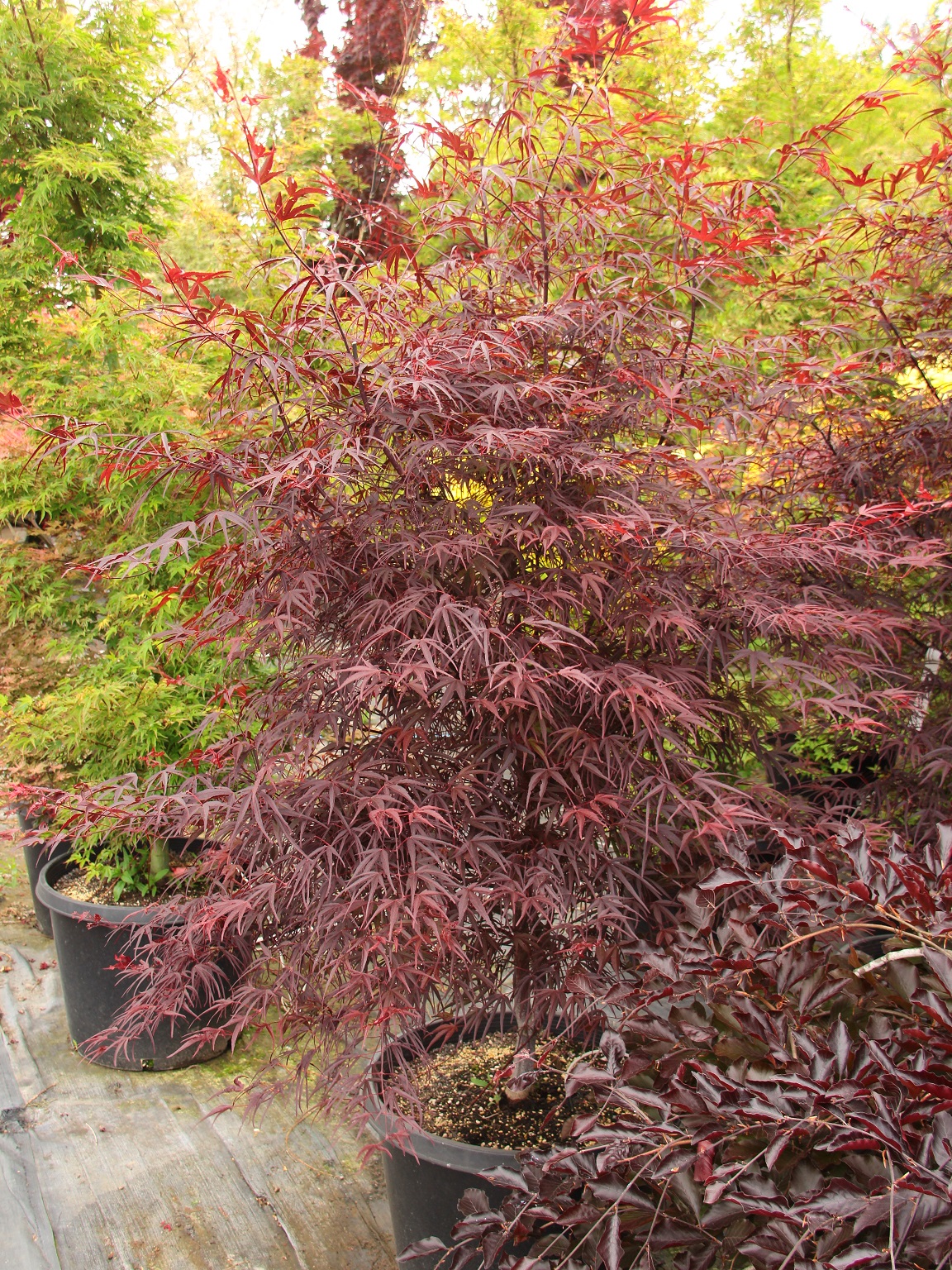
Acer palmatum ‘Rainbow’ has gorgeous red and pink variegation on the leaves for a multicolored effect. In fall, the color shifts to a bright red. Make sure to prune off any growth that does not display variegation to keep this tree at peak performance. Rainbow is a fairly new variety and it a showstopping addition to any landscape. It reaches about 8’ tall by 5’ wide at 10 years old and is hardy to USDA Zone 5.
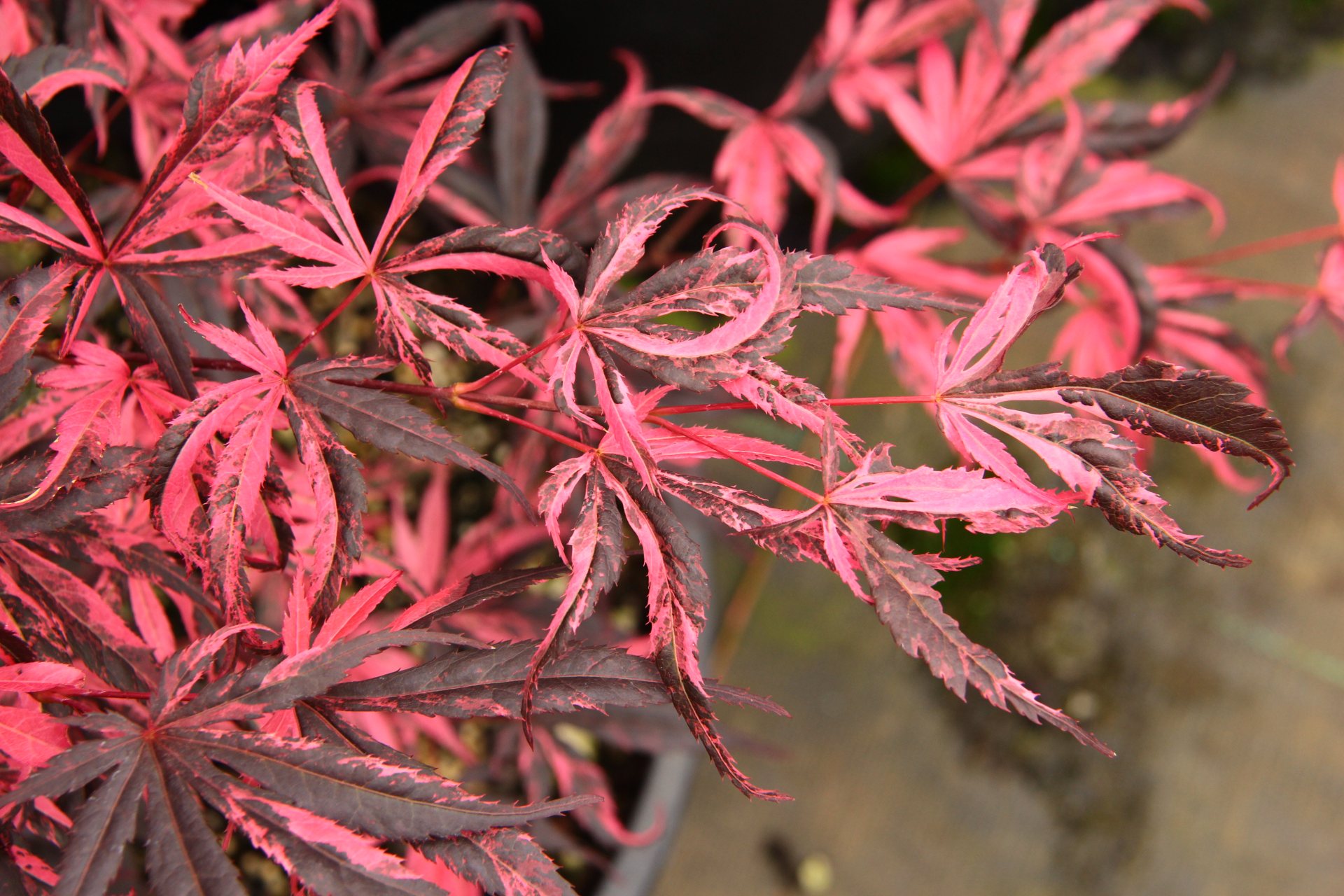
Acer palmatum ‘Black Lace’, as the name implies, is a lace leaf with incredibly dark burgundy foliage that lasts through the summer better than almost all other deep red maples. Its deep coloration provides a dramatic focal point in the garden. Pairing with bright gold or lime green companion plants really makes this variety pop! At 10 years old Black Lace can reach around 7’ tall by 3’ wide. It is hardy to USDA Zone 5.
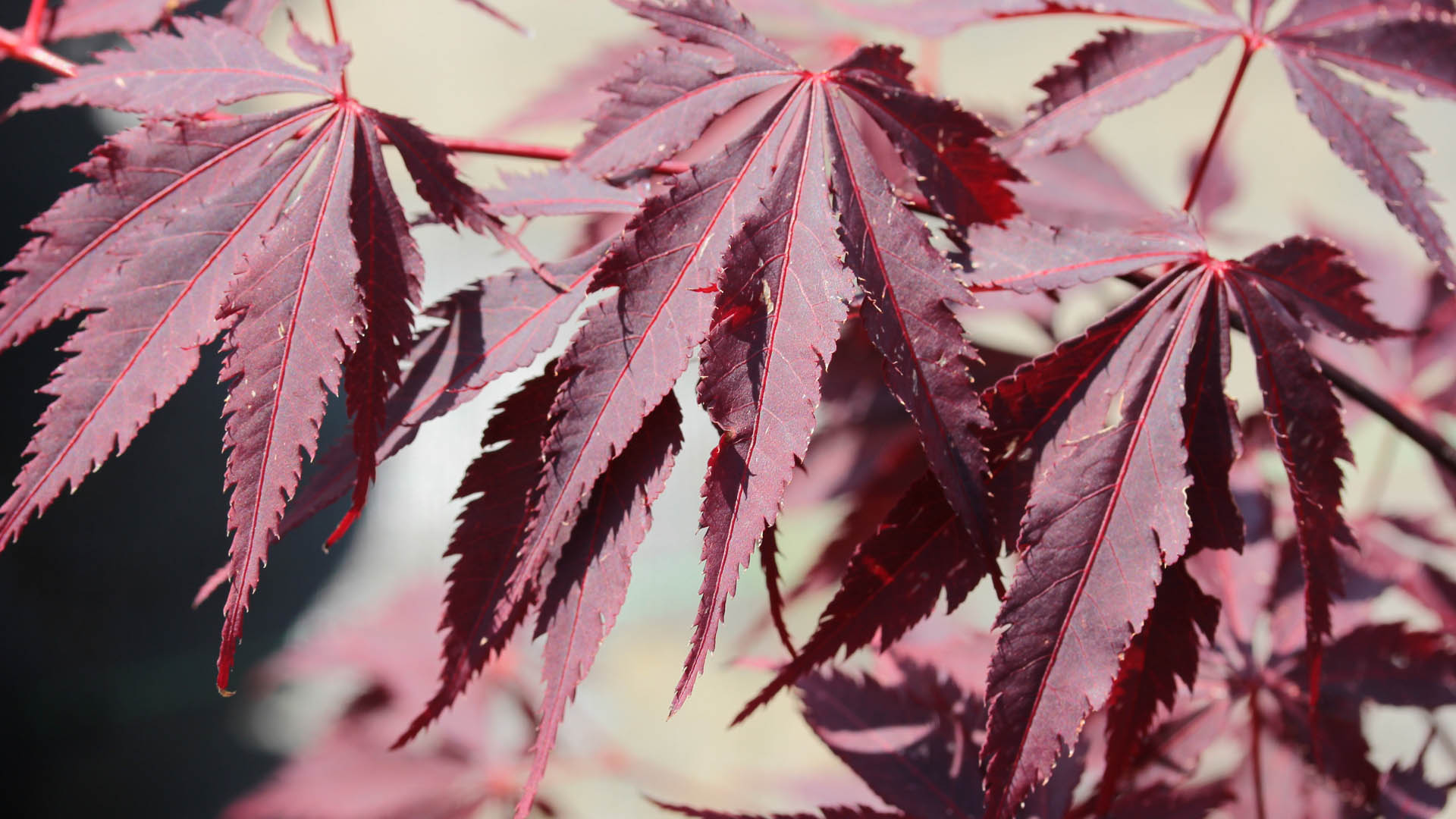
Acer palmatum ‘Rhode Island Red’ is one of our favorite dwarf maples. Its red color deepens through the summer, unlike a lot of red varieties that tend to bleach in the sun. It grows in a naturally rounded shape, making it a perfect miniature tree with purple twigs. It is very low maintenance and easy to grow either in the garden or in containers. At 10 years old it can reach up to about 6’ tall by 5’ wide, and it is hardy to USDA Zone 5.

Acer palmatum ‘Shaina’ is like a miniature Bloodgood! The foliage is bright purple-red in spring, and that color deepens throughout the summer, becoming bright red in the fall. The compact grows becomes quite dense as the tree ages, reaching only about 5’ tall at 10 years old. It is thought to have originated as a sport on Bloodgood. Shaina grows well in full sun to partial shade and is hardy to USDA Zone 6 (do not try to grow this in Zone 5).
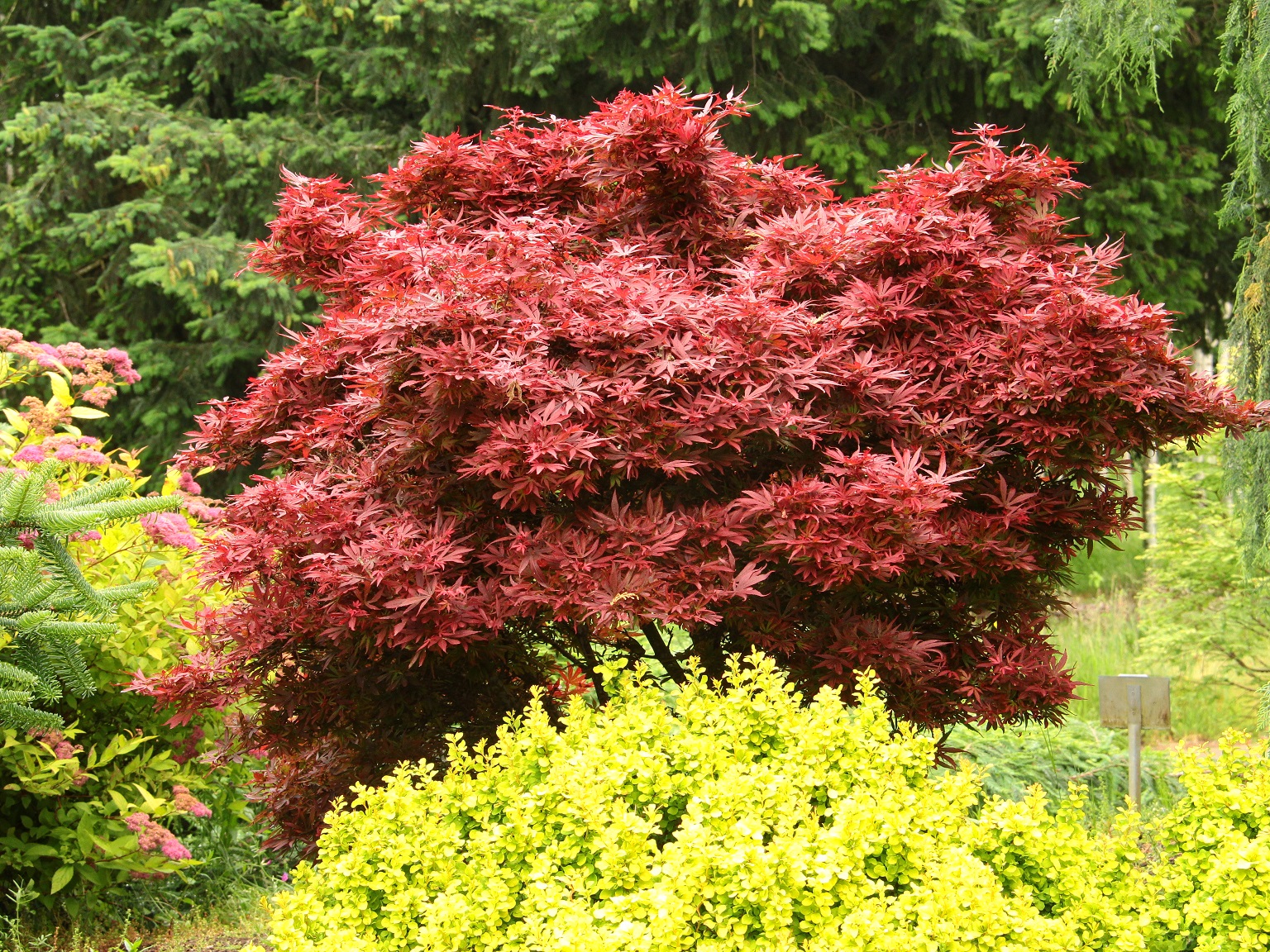
Multicolored Dwarf Maples
Acer palmatum ‘Anne Irene’ is a gorgeous and hard to find maple with golden leaves that are bordered in bright red in spring. In summer, the red margins fade, leaving beautiful yellow throughout the season. Fall brings a range of gold to maroon colors. It can reach 6-8’ tall in 10 years. Anne Irene prefers partial shade exposure and is hardy to USDA Zone 5.
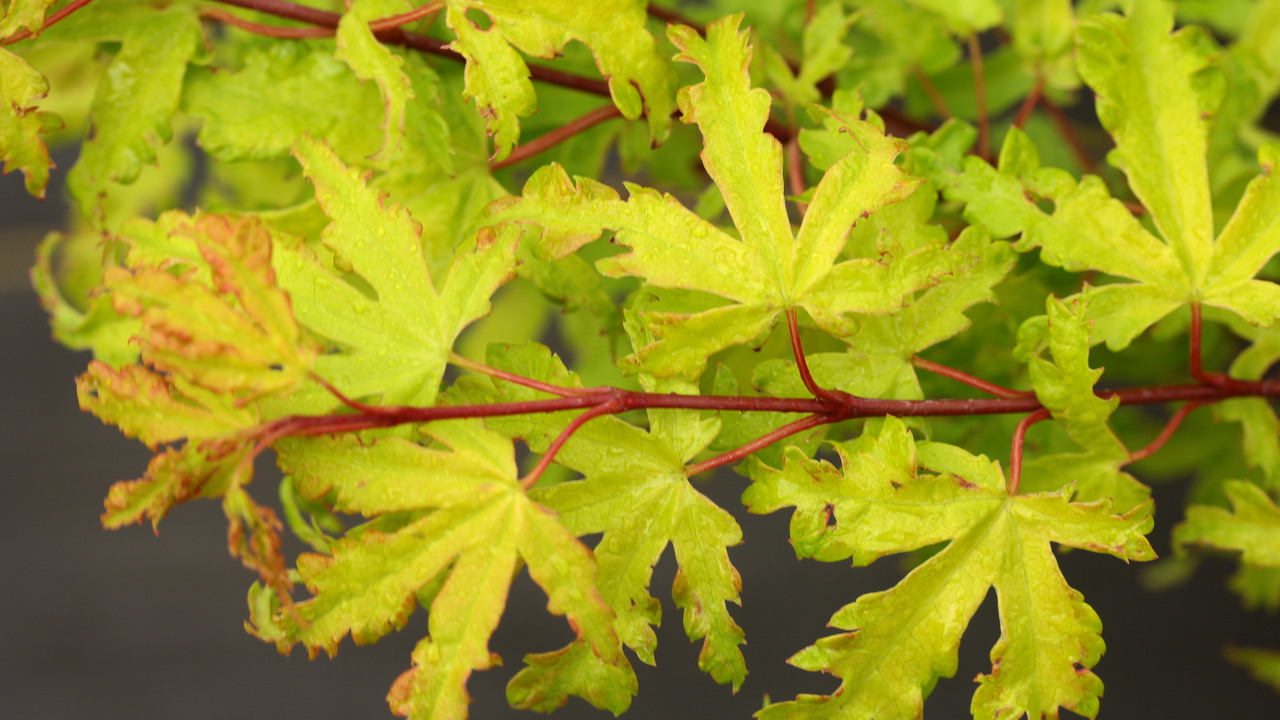
Acer palmatum ‘Beni hime’ is a dwarf Japanese maple with tiny leaves that are only about .5 inches across. They are red primarily, backed by some coppery green shades as well. In fall the coloring is vivid red. It grows into a dense, small tree over time, reaching only about 4-6’ tall in 10 years. Plant in full sun for best success and coloring, and make sure the soil has good drainage. Beni hime is hardy to USDA Zone 5.
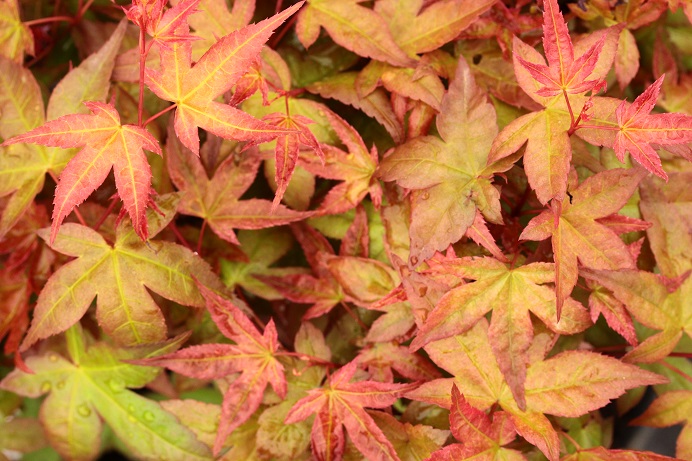
Acer palmatum ‘Lemon Lime Lace’ has a perfect name to describe its appearance! Colors range on the extremely lacy leaves from lemon yellow to lime green, with hints of tangerine in sun-kissed portions. This yellow and orange intensifies in fall. Lemon Lime Lace grows into a loose, weeping mound for a graceful and delicate focal point. At 10 years old this variety grows to about 2’ tall by 4’ wide. It is hardy to USDA Zone 5 and grows well in full sun (more gold) to partial shade (more green).
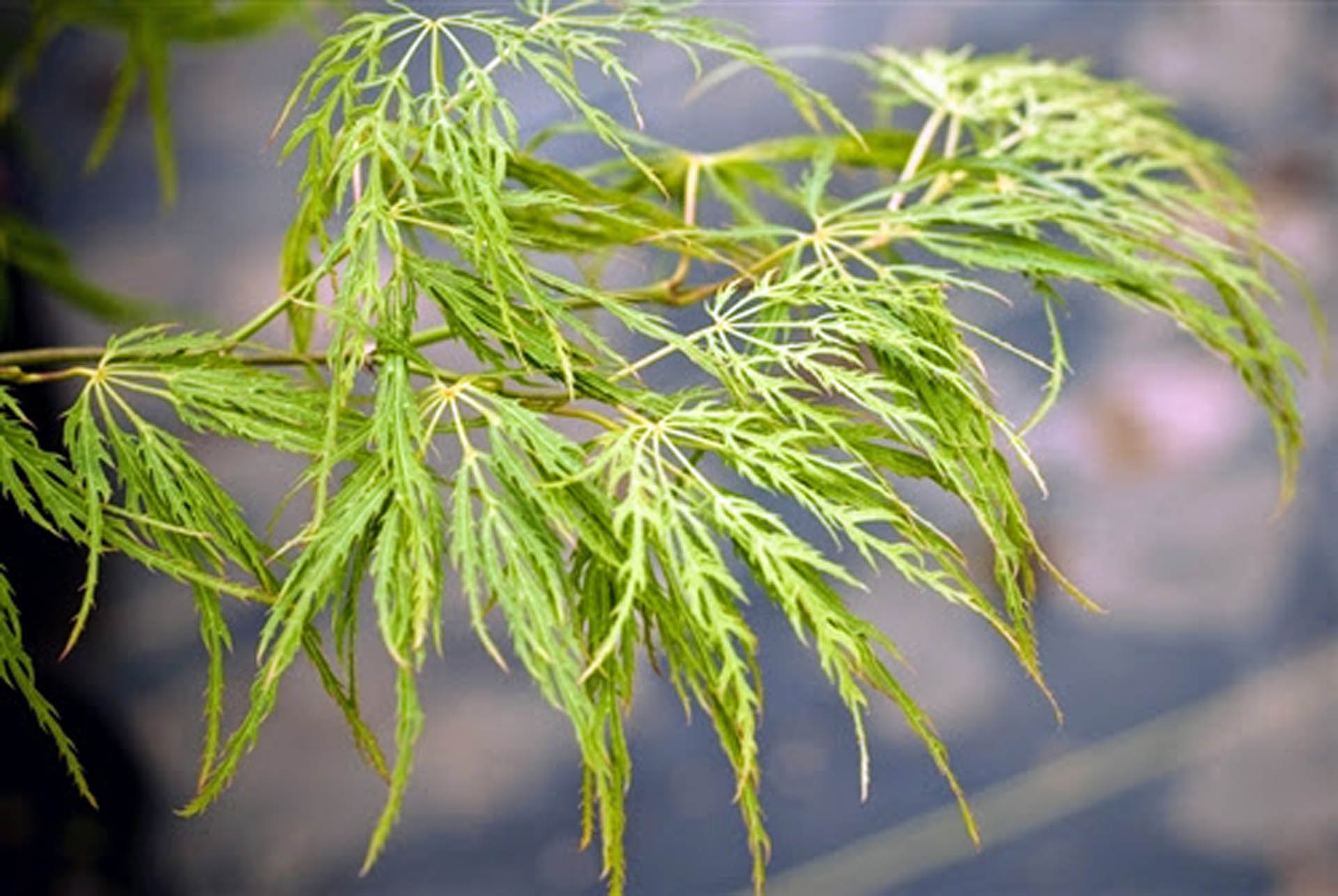
Acer palmatum ‘Manyo no sato’ has the most unique coloration you’re likely to see on any Japanese maple. Each deeply divided palmate leaf has a deep red center outlined with pink, green, or cream (or all of the above). In fall, they shift to brilliant orange and red. This tree might not be considered a “true dwarf”, but it matures at a nice, small size compared to many intermediate growth Japanese maples. Expect about 7’ tall by 4’ wide at 10 years old. Manyo no sato roughly translates to “wonderful place of nature”. It grows in full sun to partial shade and is hardy to USDA Zone 5.
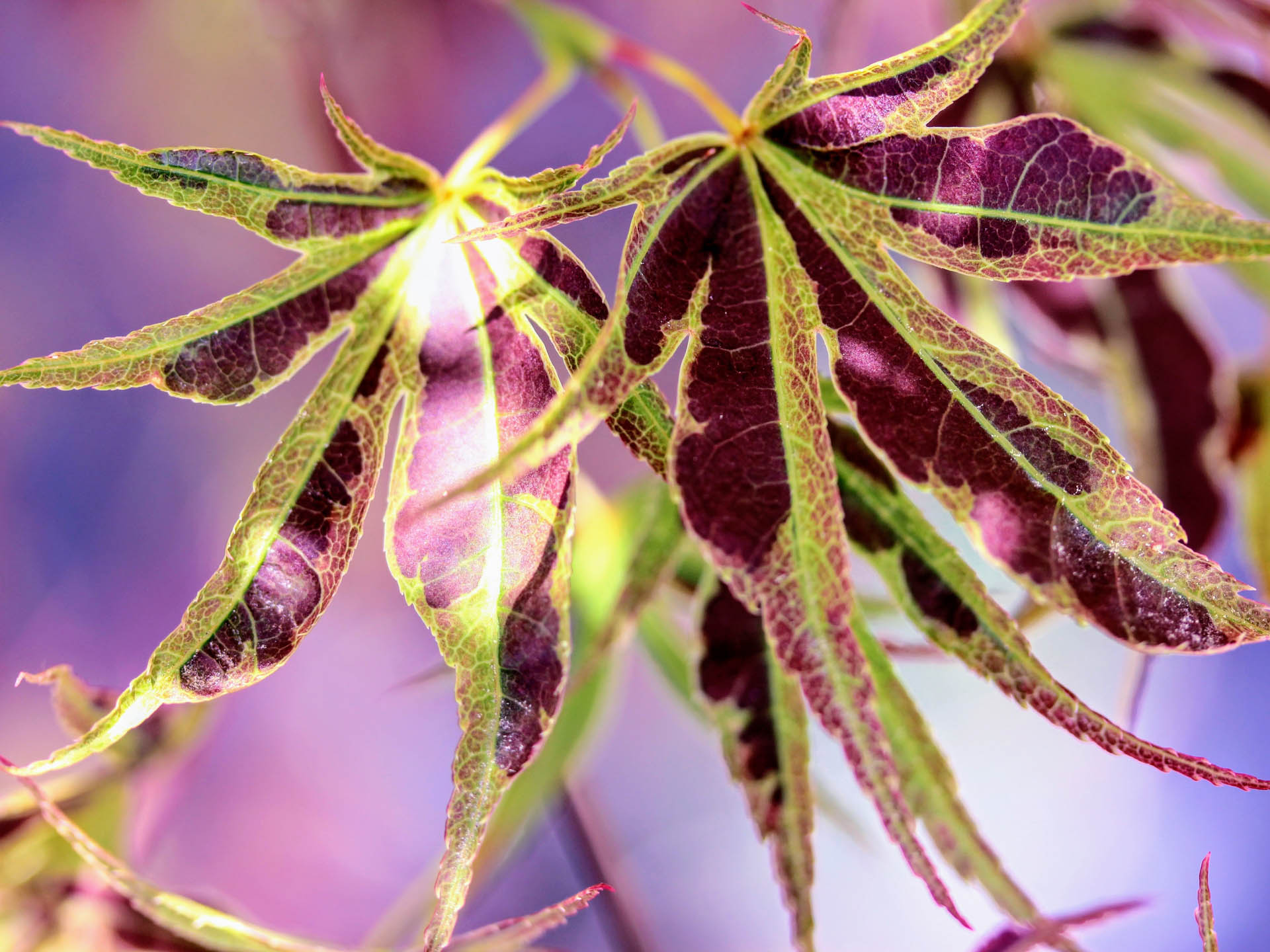
Acer palmatum ‘Ryugu’ boasts stunning green, white, and pink variegation with bright red stems that add contrast in summer and bright color in winter. This maple is very slow growing, and it forms a shrub shape rather than a tree with a central leader. It stays very compact and is perfect for small spaces. Ryugu translates to “dragon palace castle”. It matures to about 4’ tall at 10 years old and is hardy to USDA Zone 5.
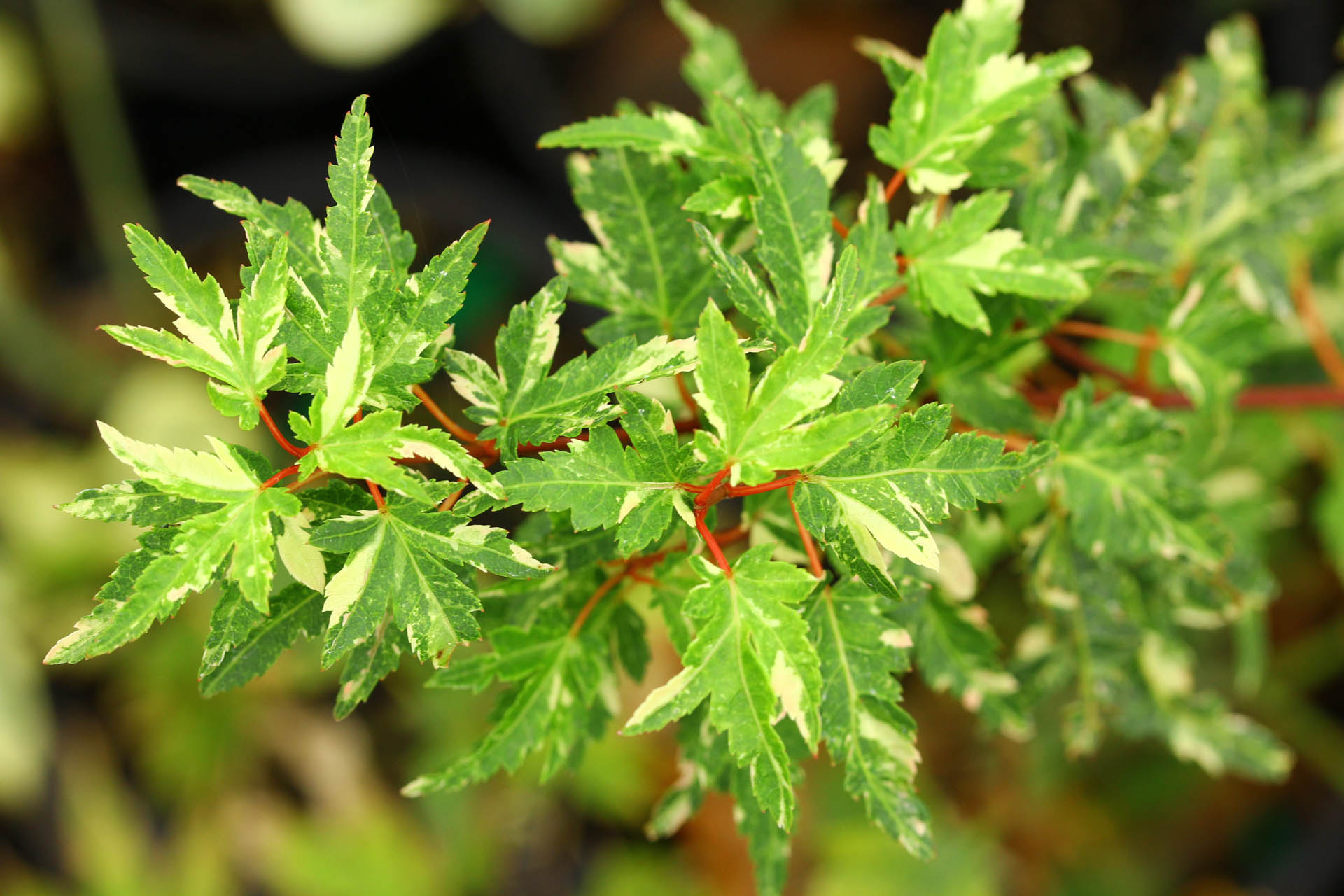
Acer palmatum ‘Tsuma beni’ has some of the most dramatic coloration ever seen on a Japanese maple. In spring, the new leaves emerge golden with red tips on each lobe. The summer color deepens to green and the red tips fade. In fall, the leaves turn a riot of scarlet. Tsuma beni translates to “red fingernails” – a fitting name! At 10 years old this maple can reach up to 8’ tall by 6’ wide. It is hardy to USDA Zone 5 and tolerates full sun to partial shade.
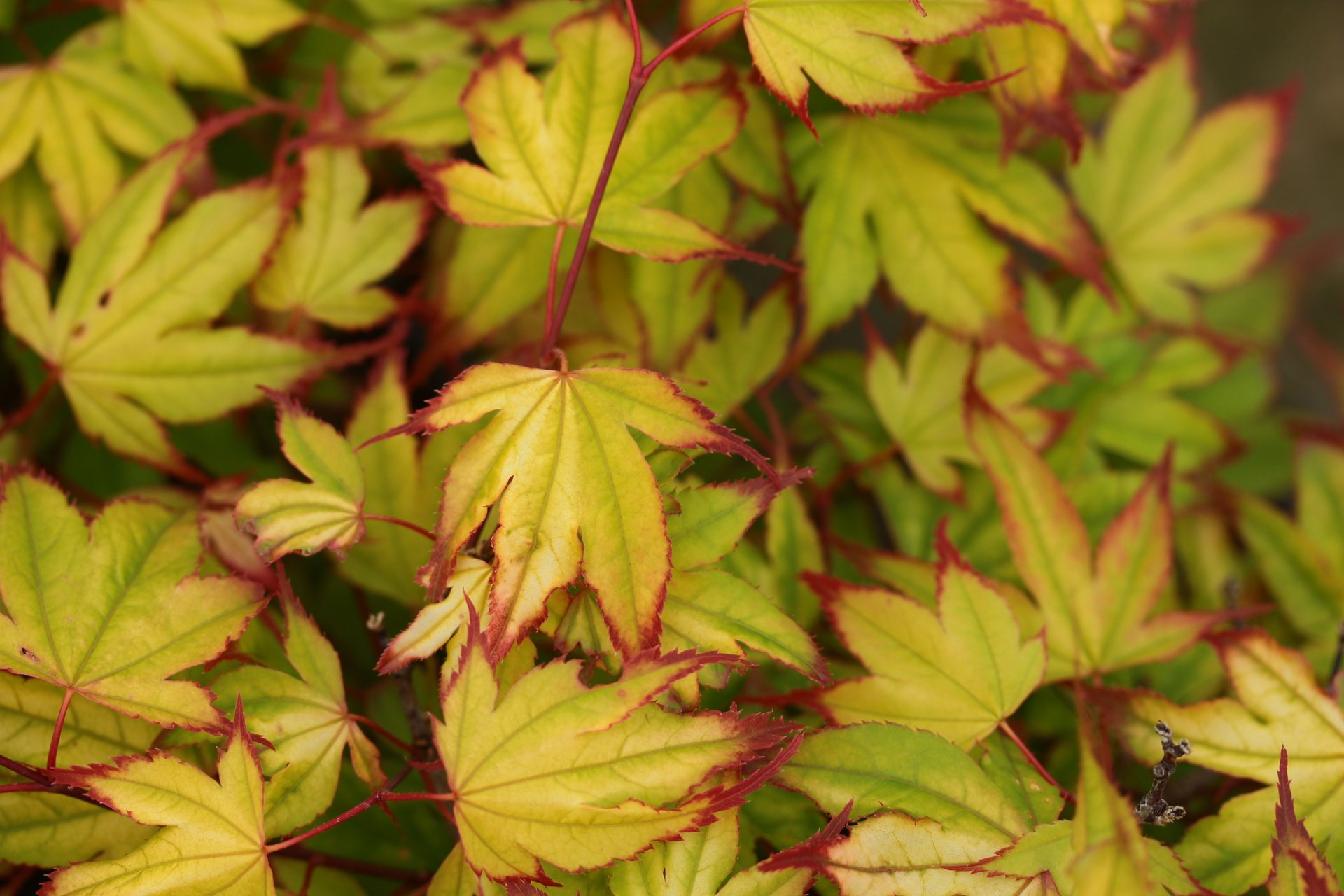
Acer palmatum ‘Tsuma gaki’ is similar to Tsuma beni with some interesting variations. When the leaves emerge in spring on Tsuma gaki, they are golden yellow with bright orange-red tips, while Tsuma beni is more green with burgundy-red tips. The leaves on Tsuma gaki open in a fascinating drooping manner, eventually opening to flat leaves for summer. The tip color lasts through early summer, when the leaves overall turn more green. Fall color is spectacular on this variety, with golds, oranges, and reds. Tsuma gaki translates to “painted fingernails”. It reaches about 8’ tall by 4’ wide at 10 years and grows well in full sun to partial shade. It is hardy to USDA Zone 5.
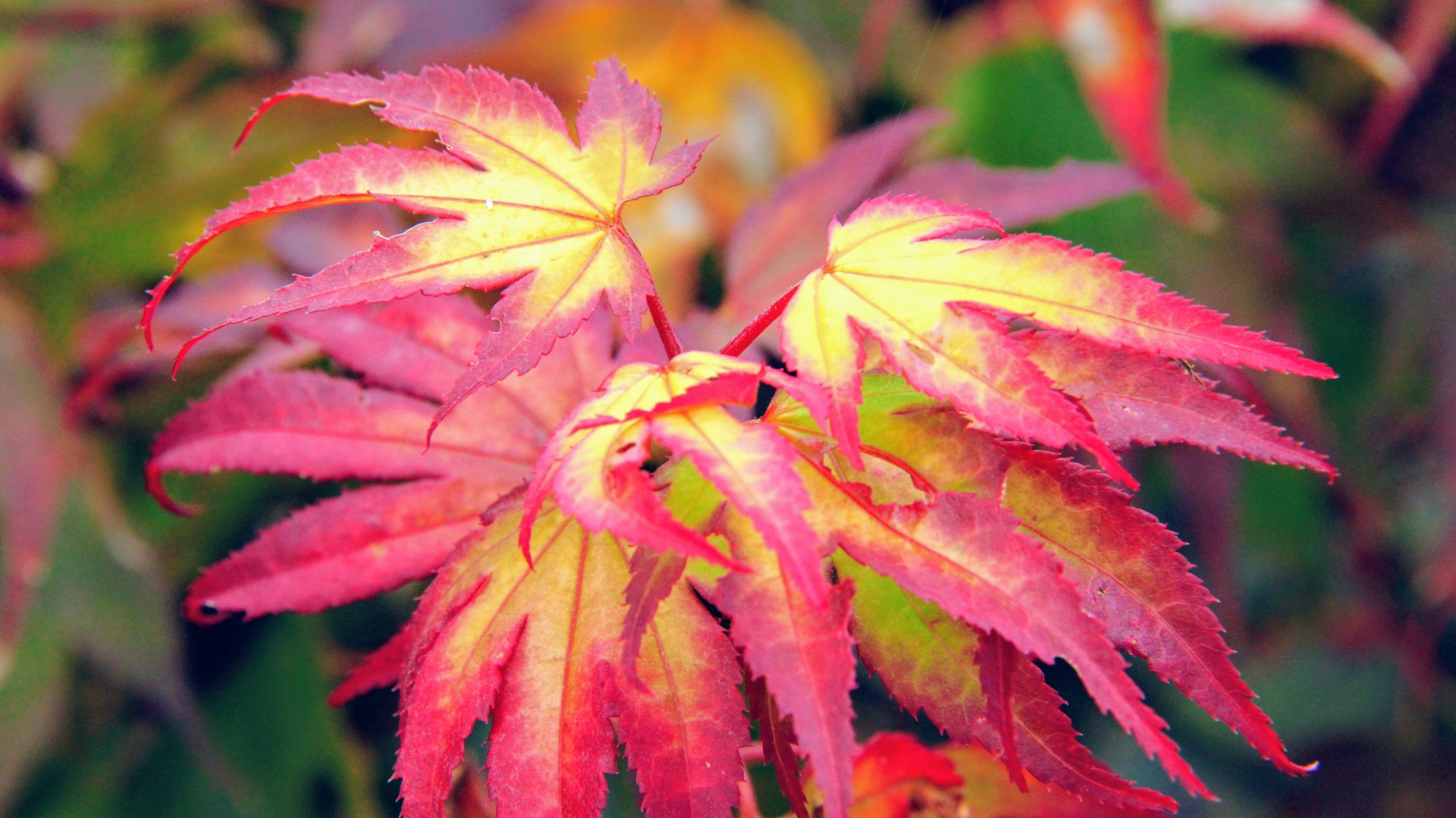
Acer pictum ssp. mono ‘Hoshi yadori’ is a Painted Maple with stunning variegation. It is a rare variety that makes a big impact in the landscape, with broad leaves that are splashed with a gorgeous creamy-yellow variegation. At 10 years old this maple can reach a size of 7’ tall by 5.5’ wide with a lovely, naturally open habit. It tolerates full sun and partial shade, and is hardy to USDA Zone 6.
